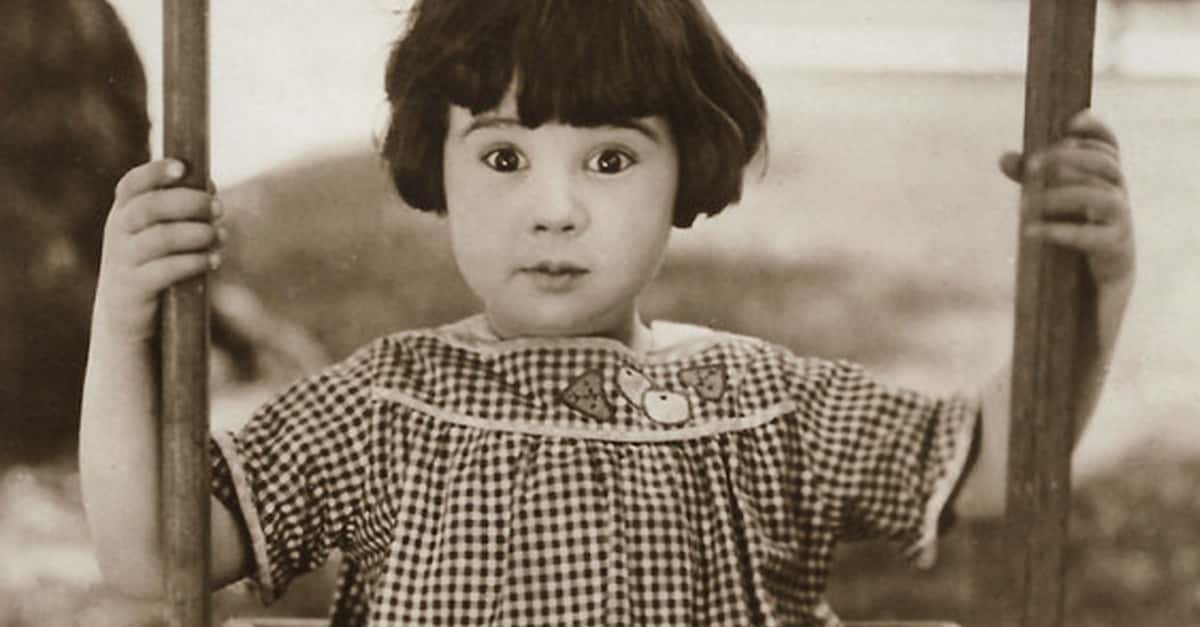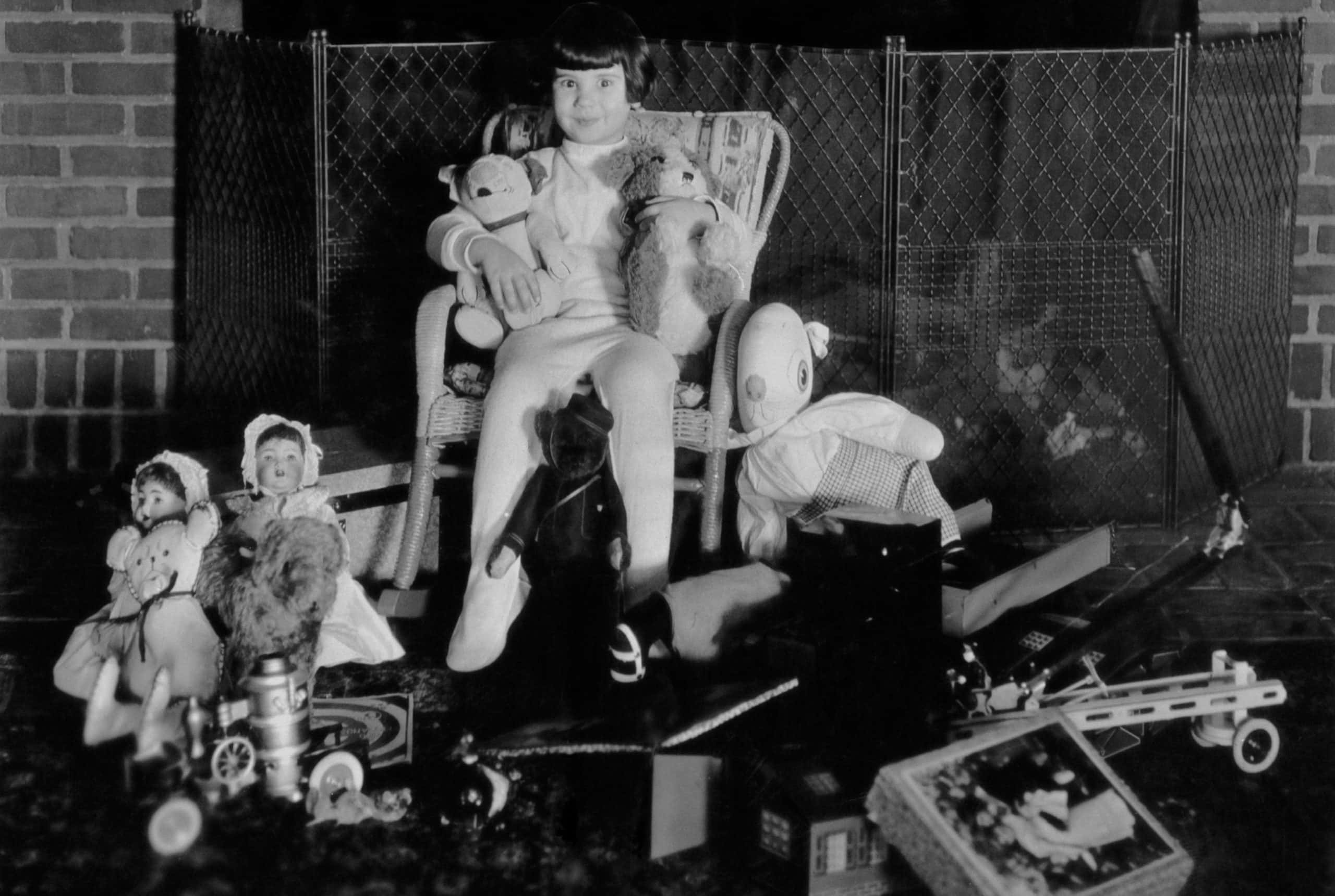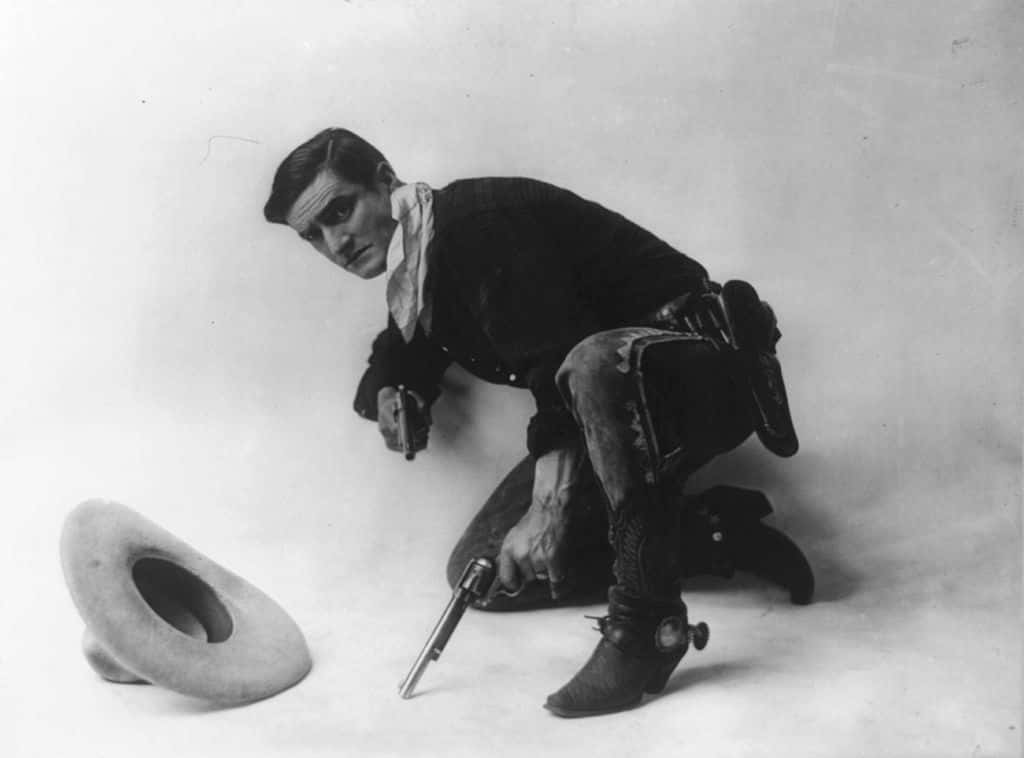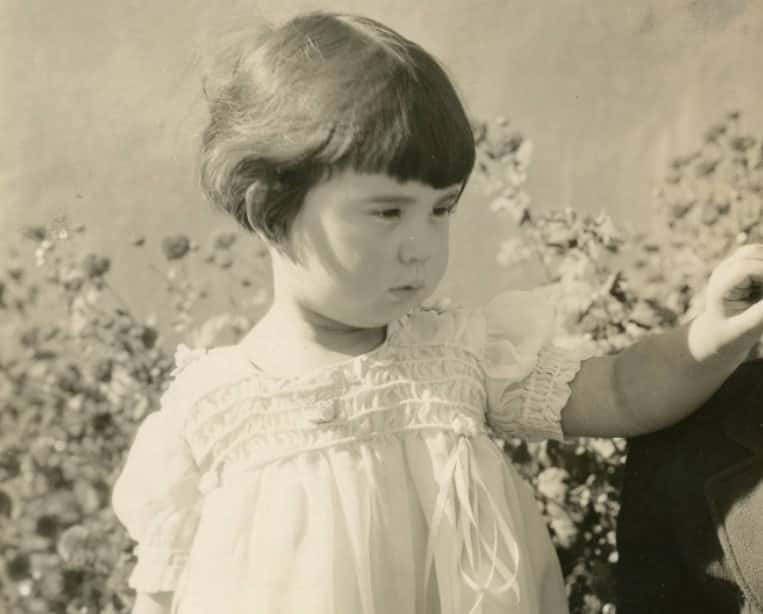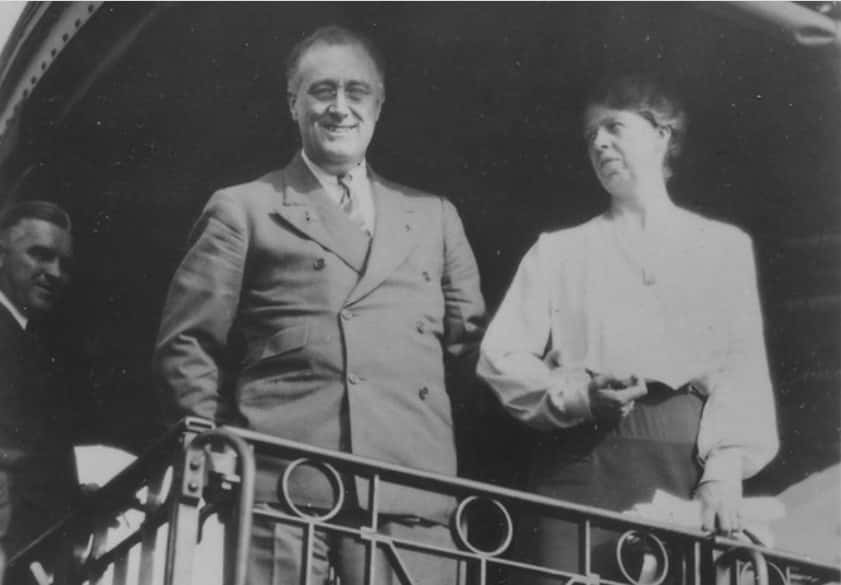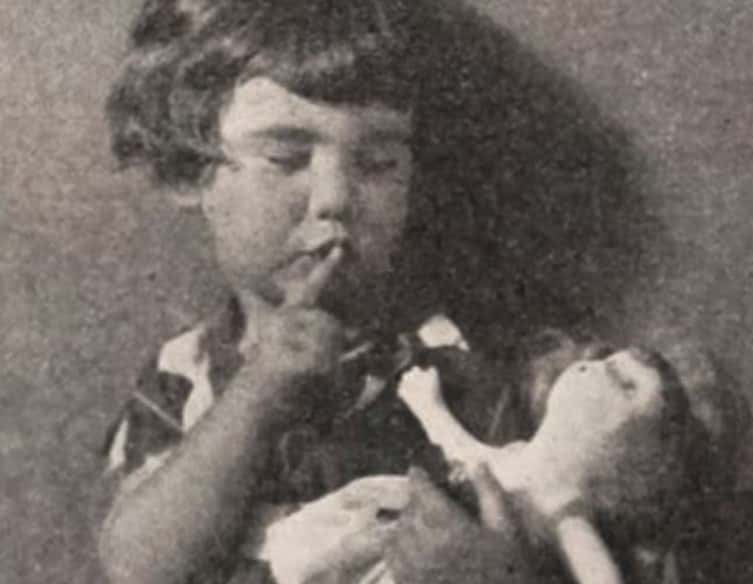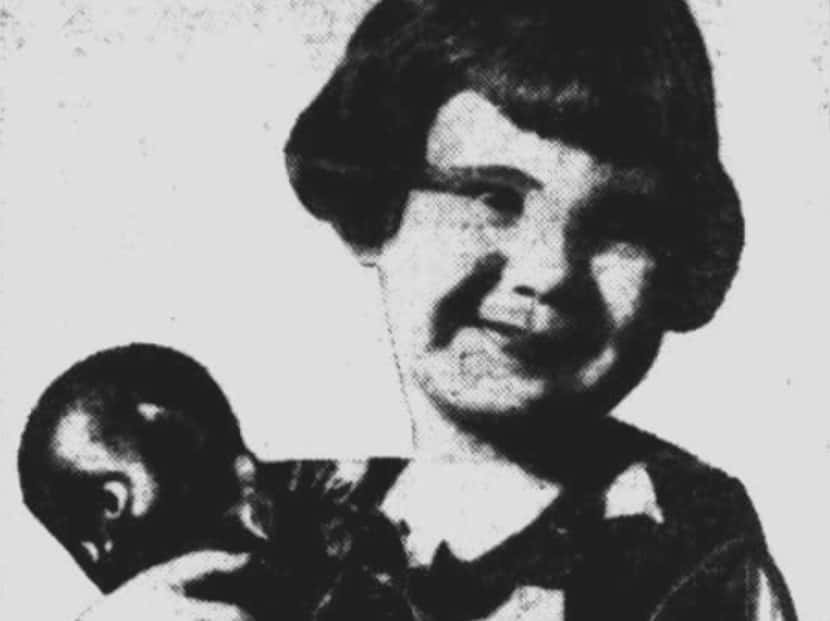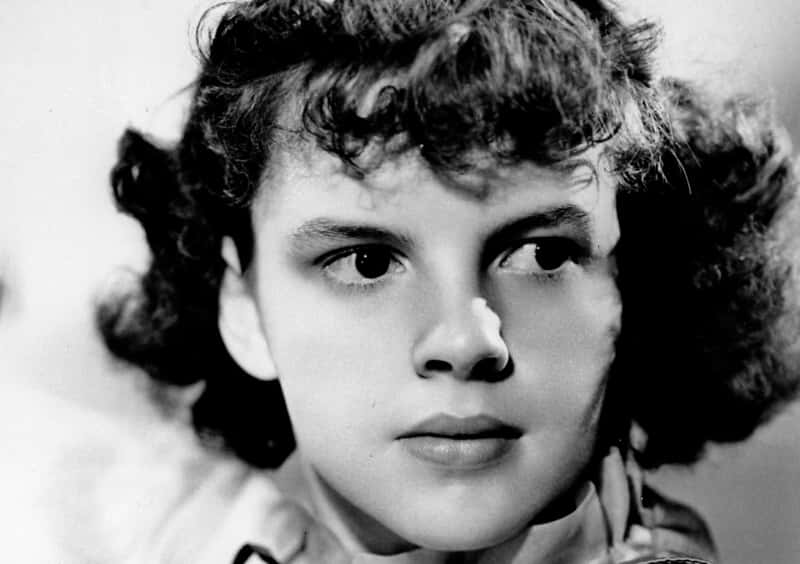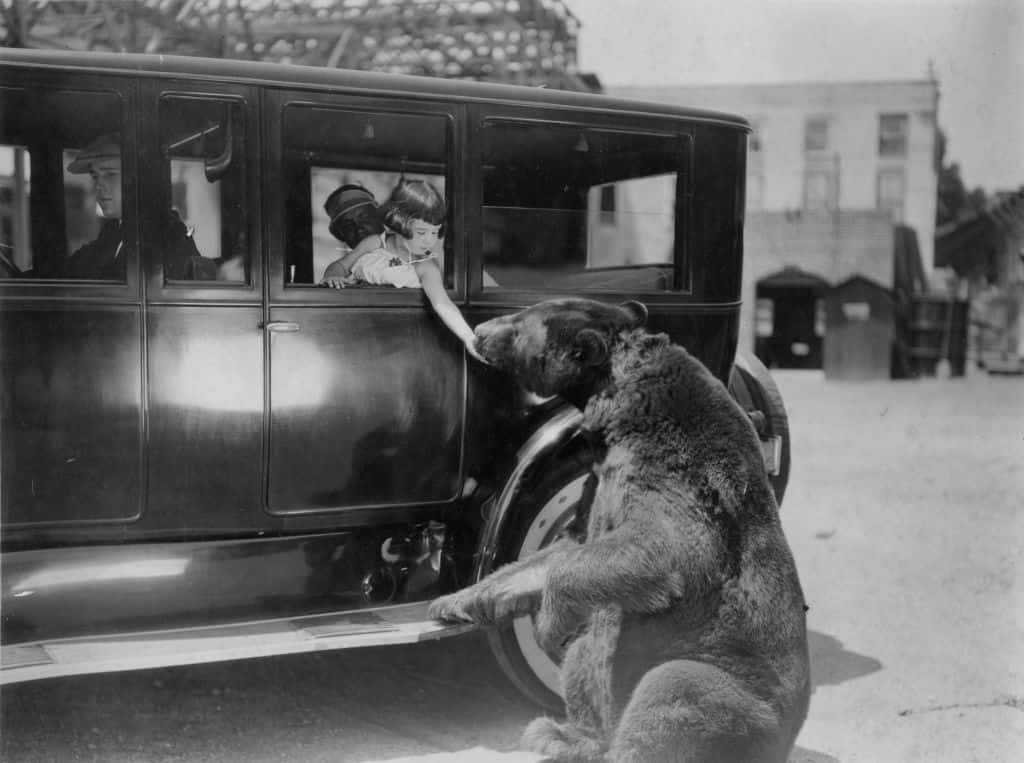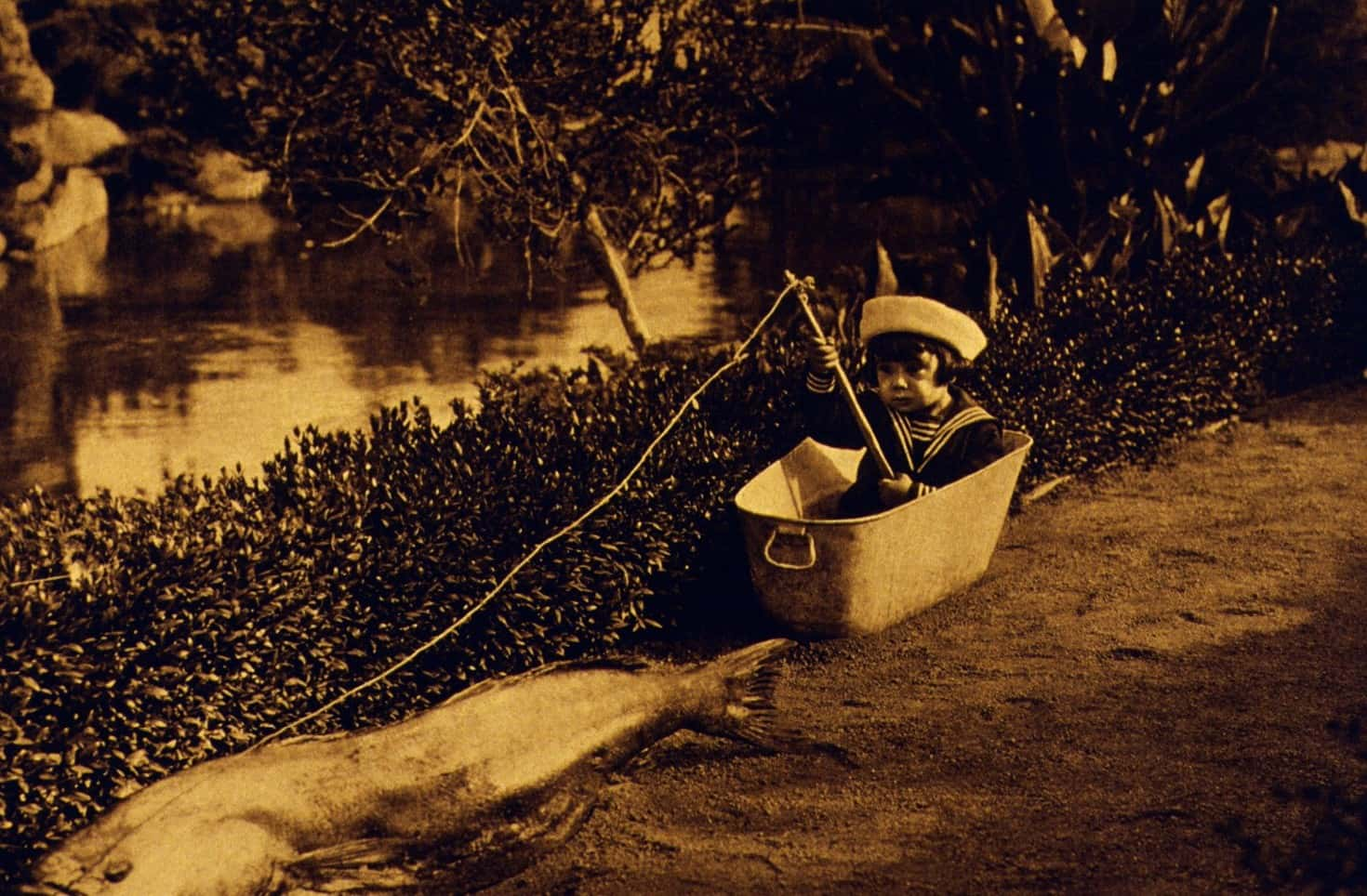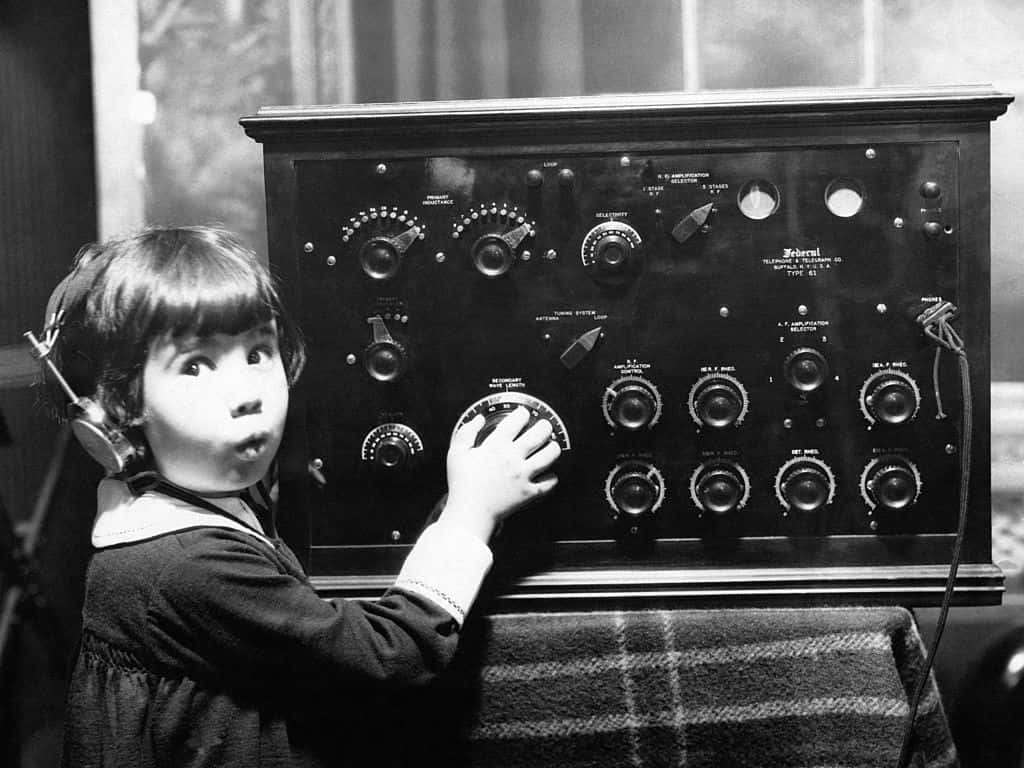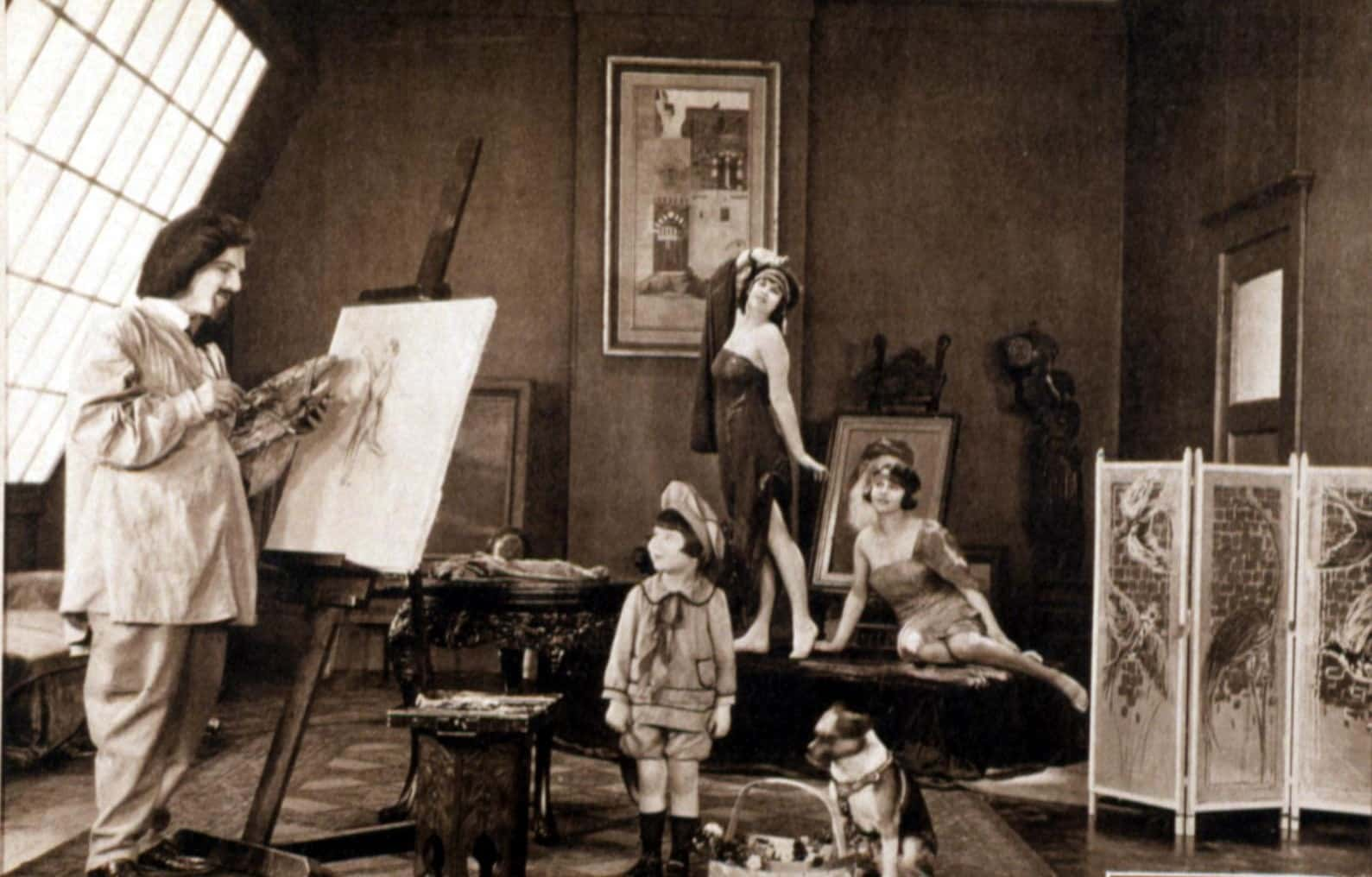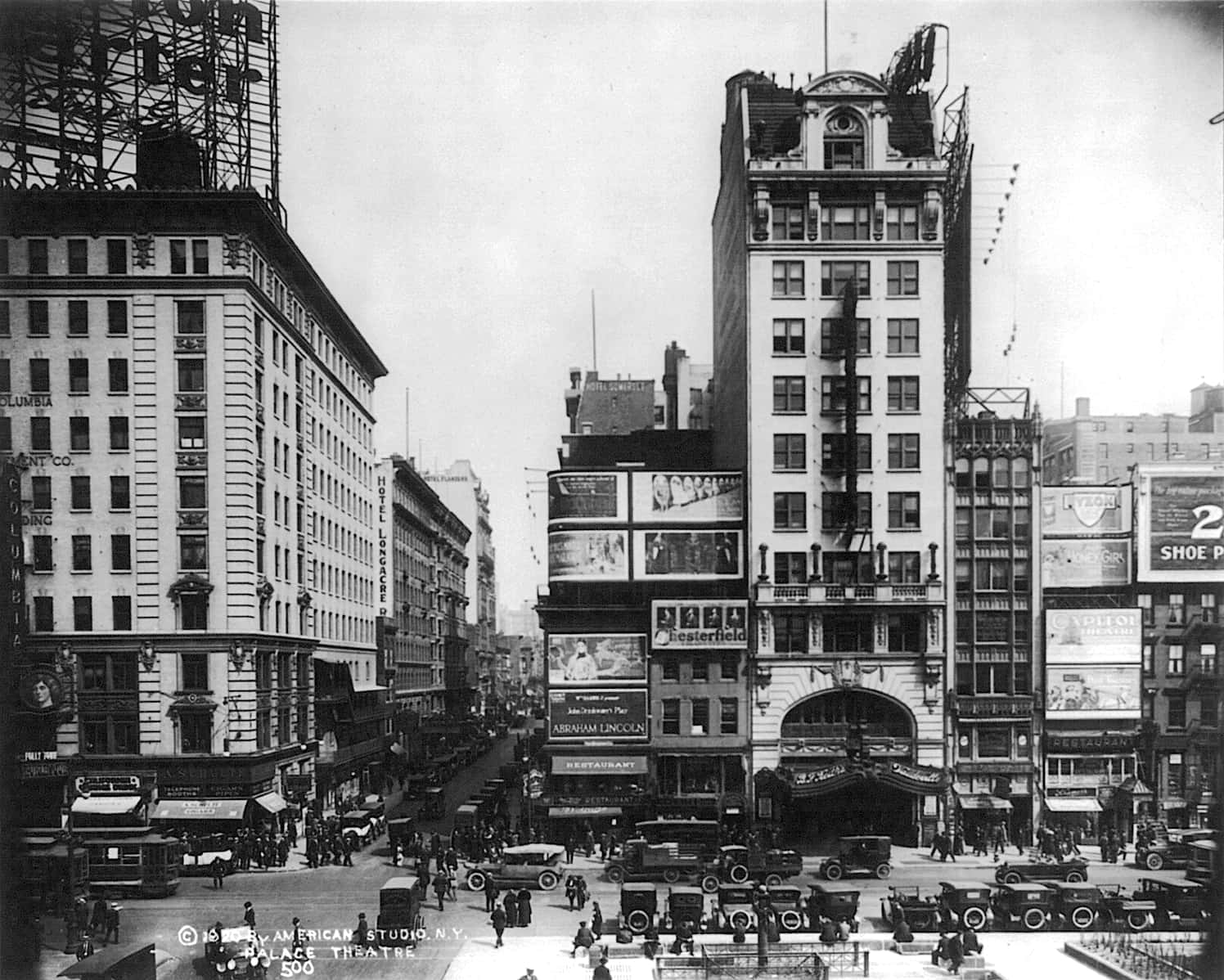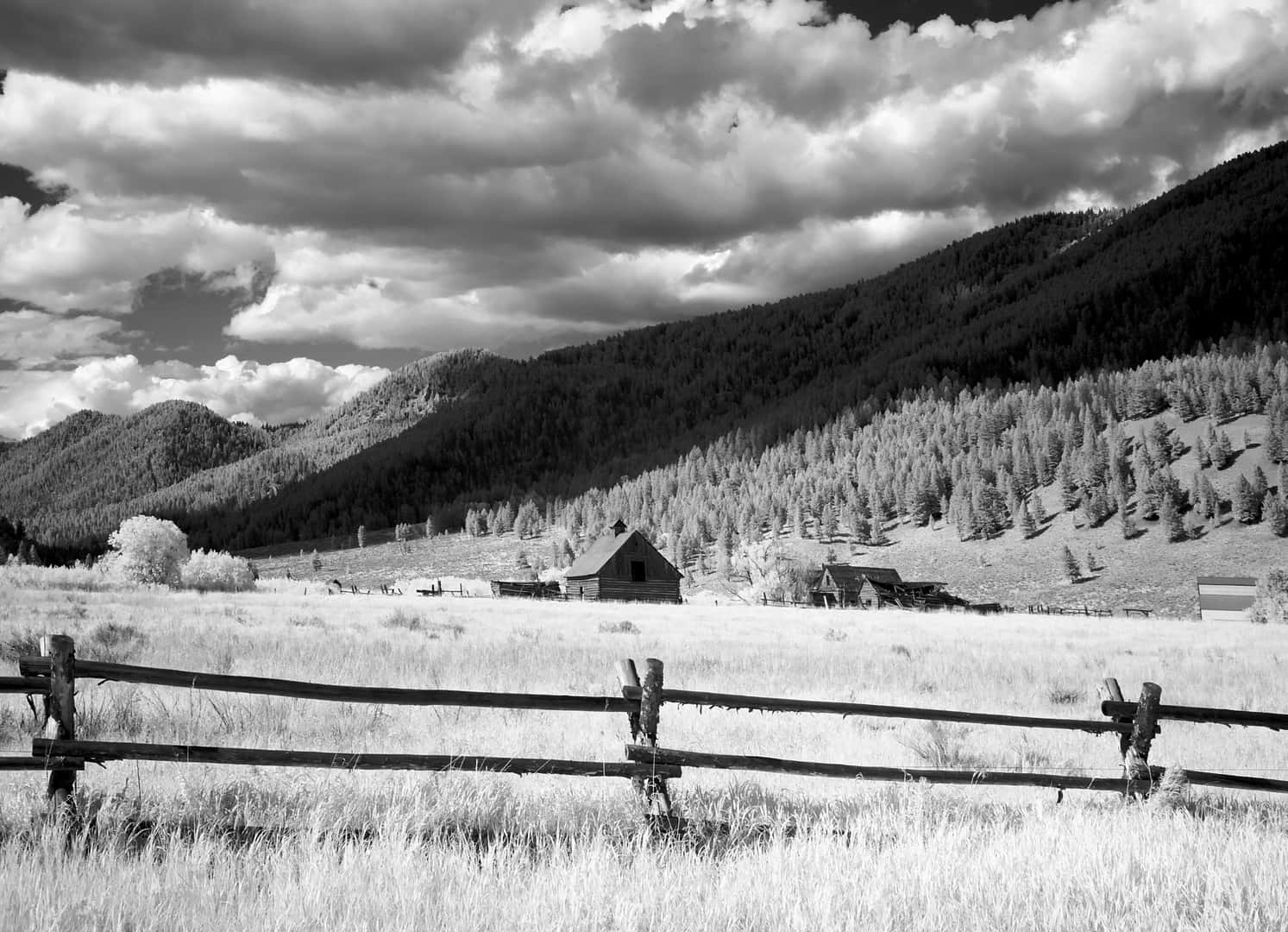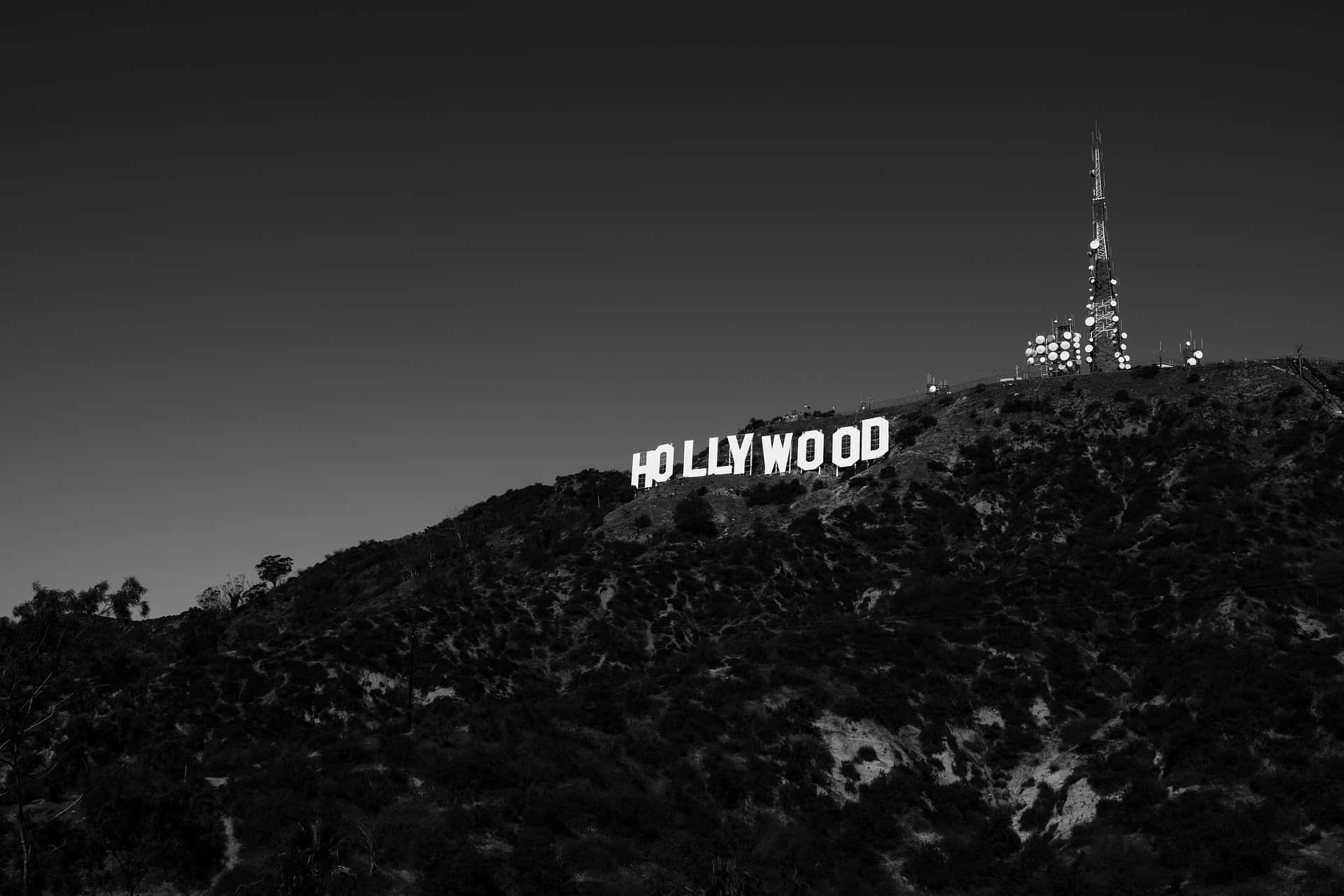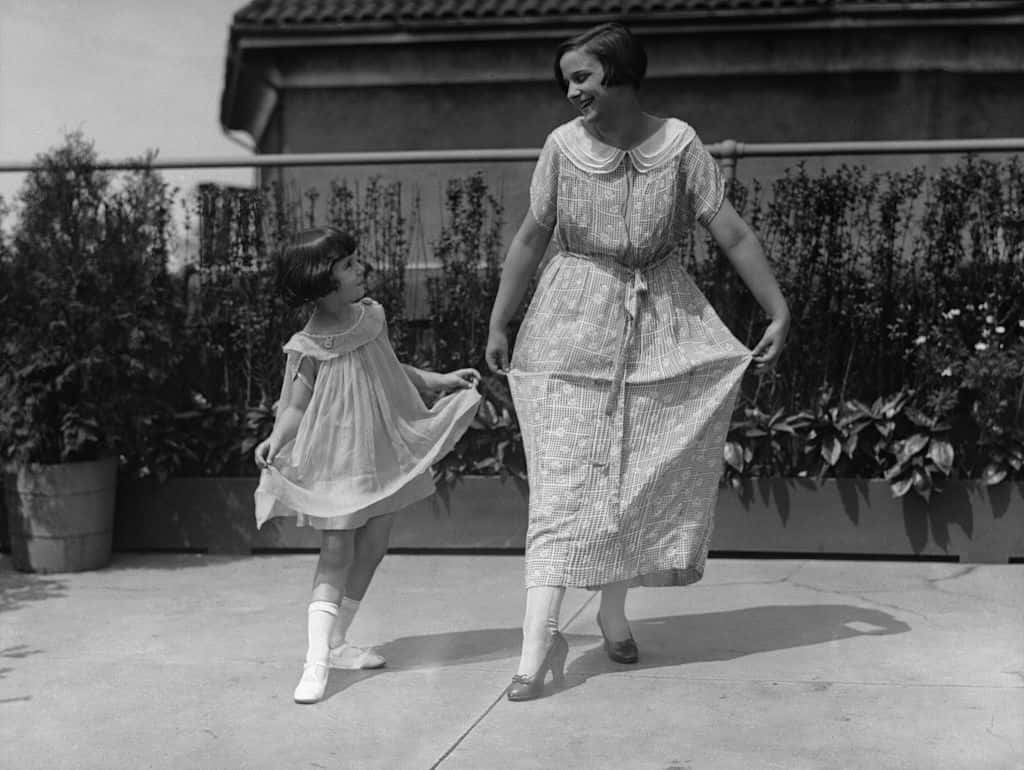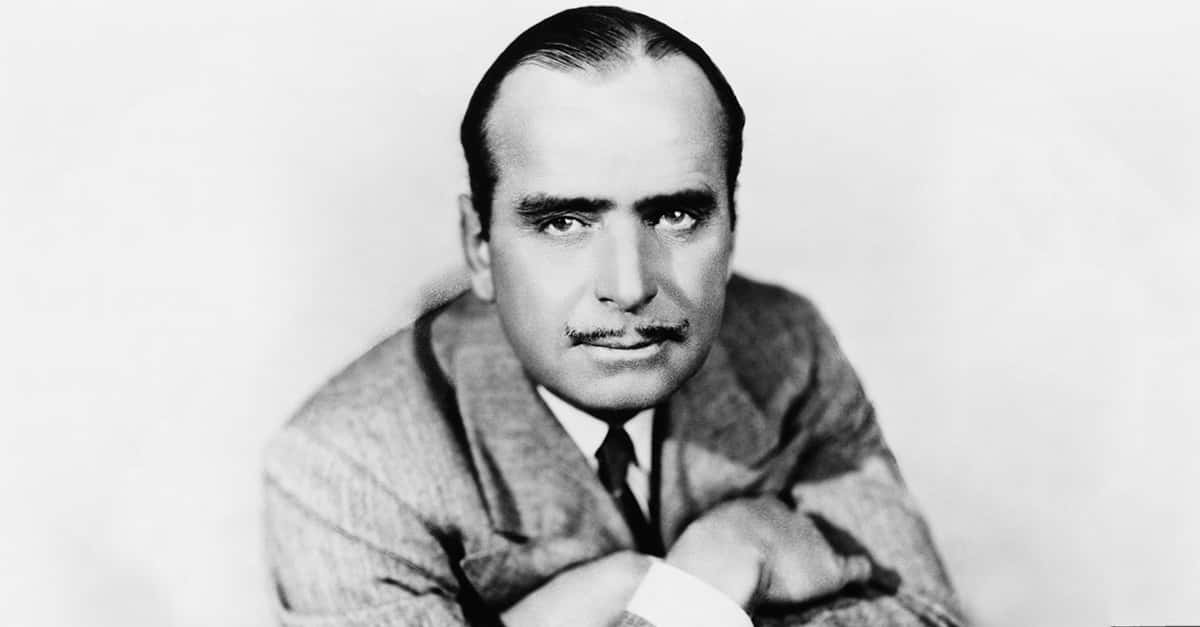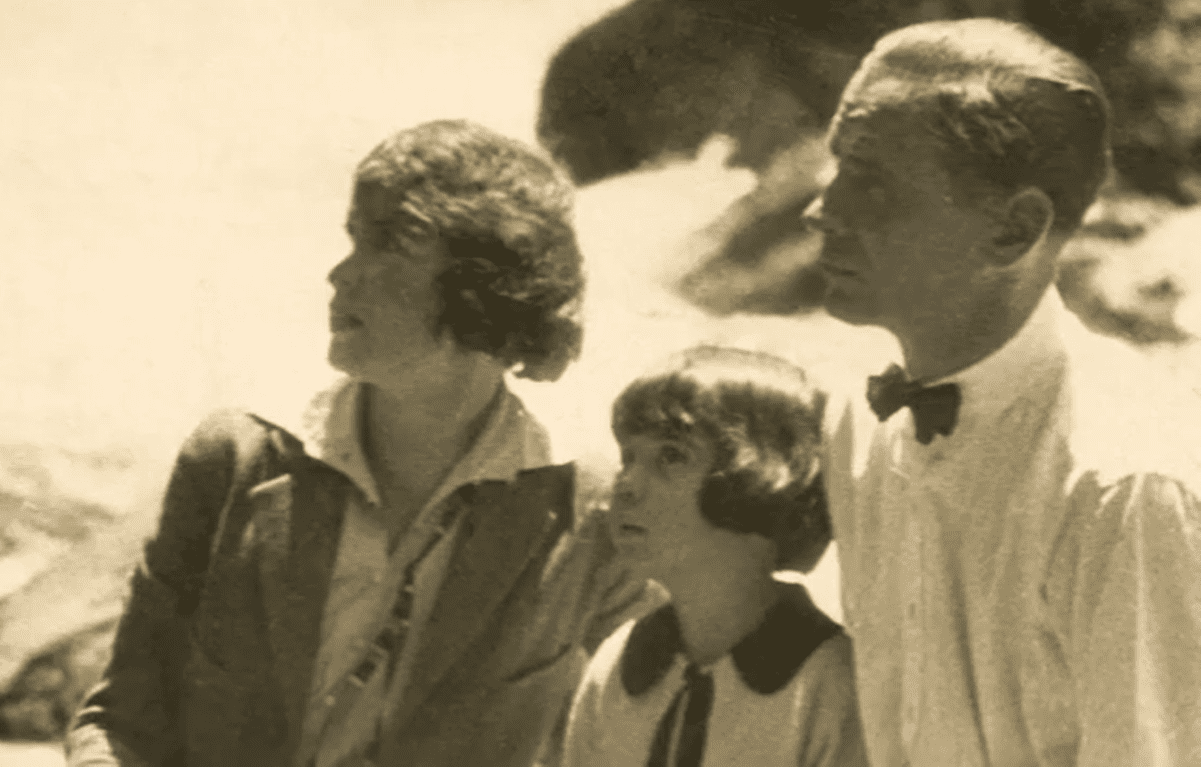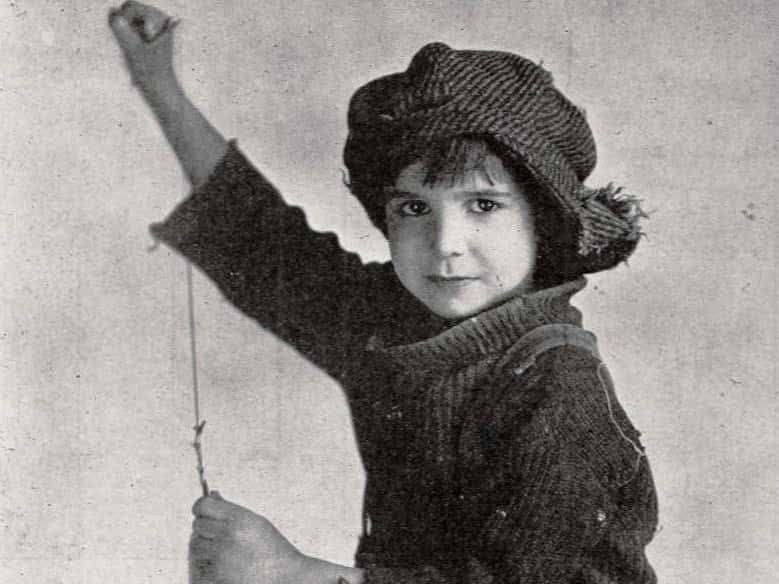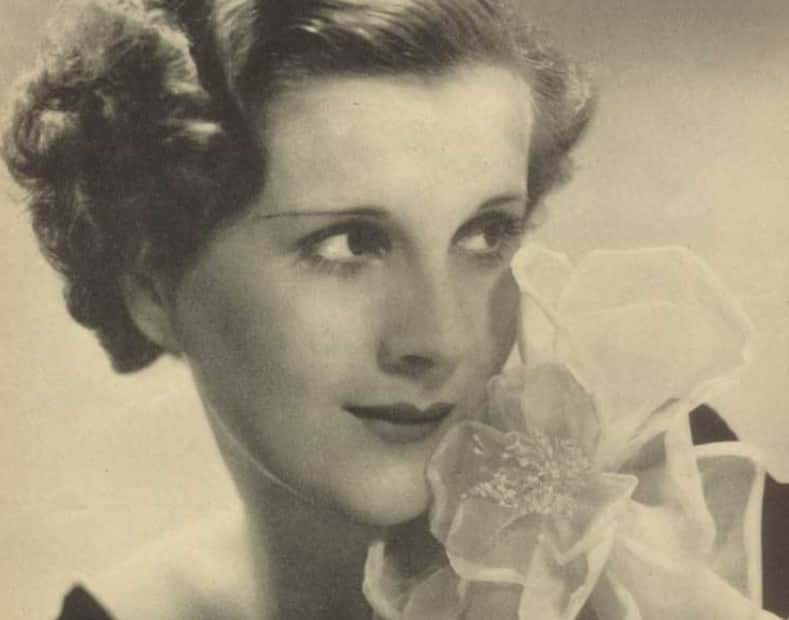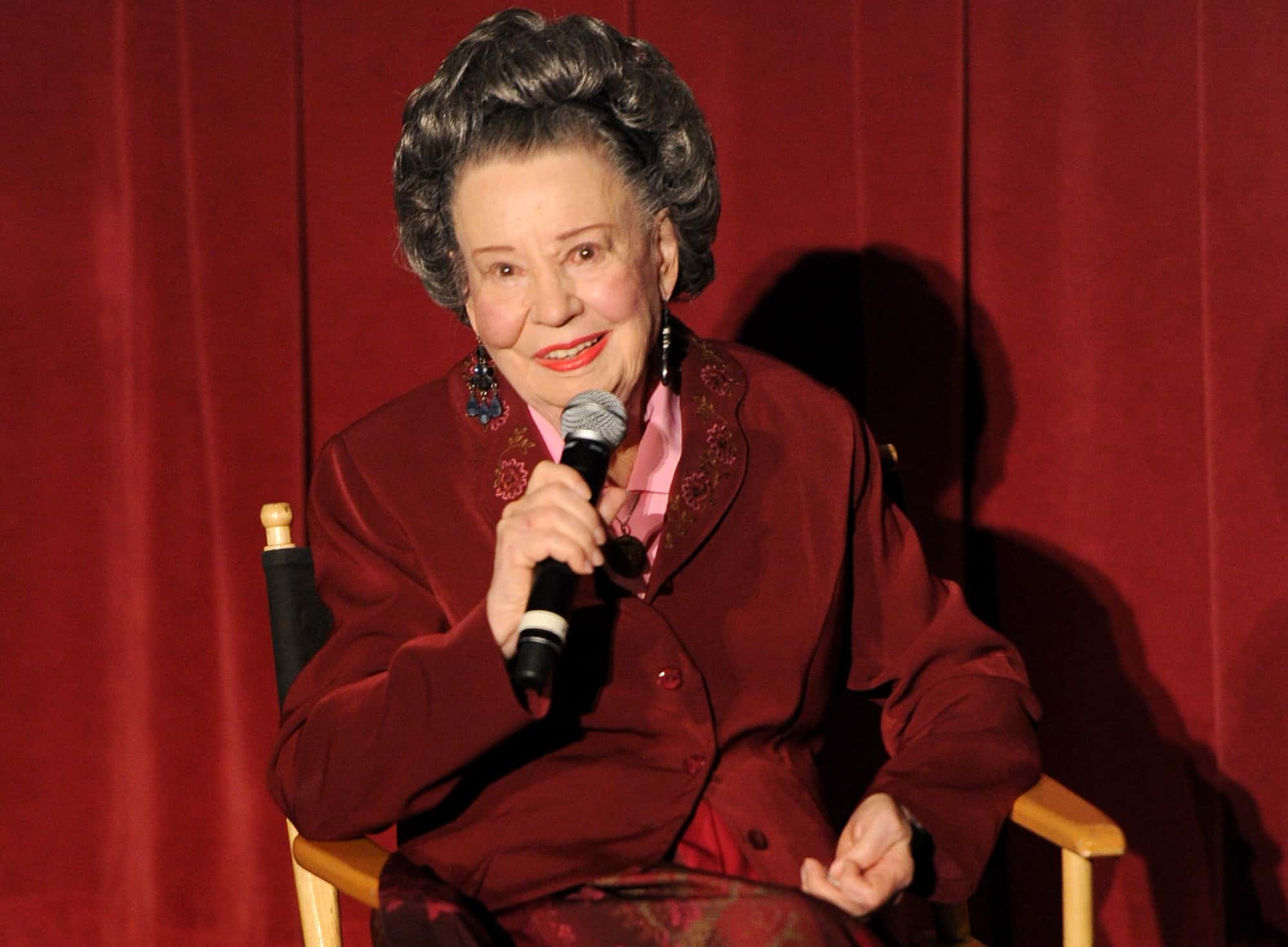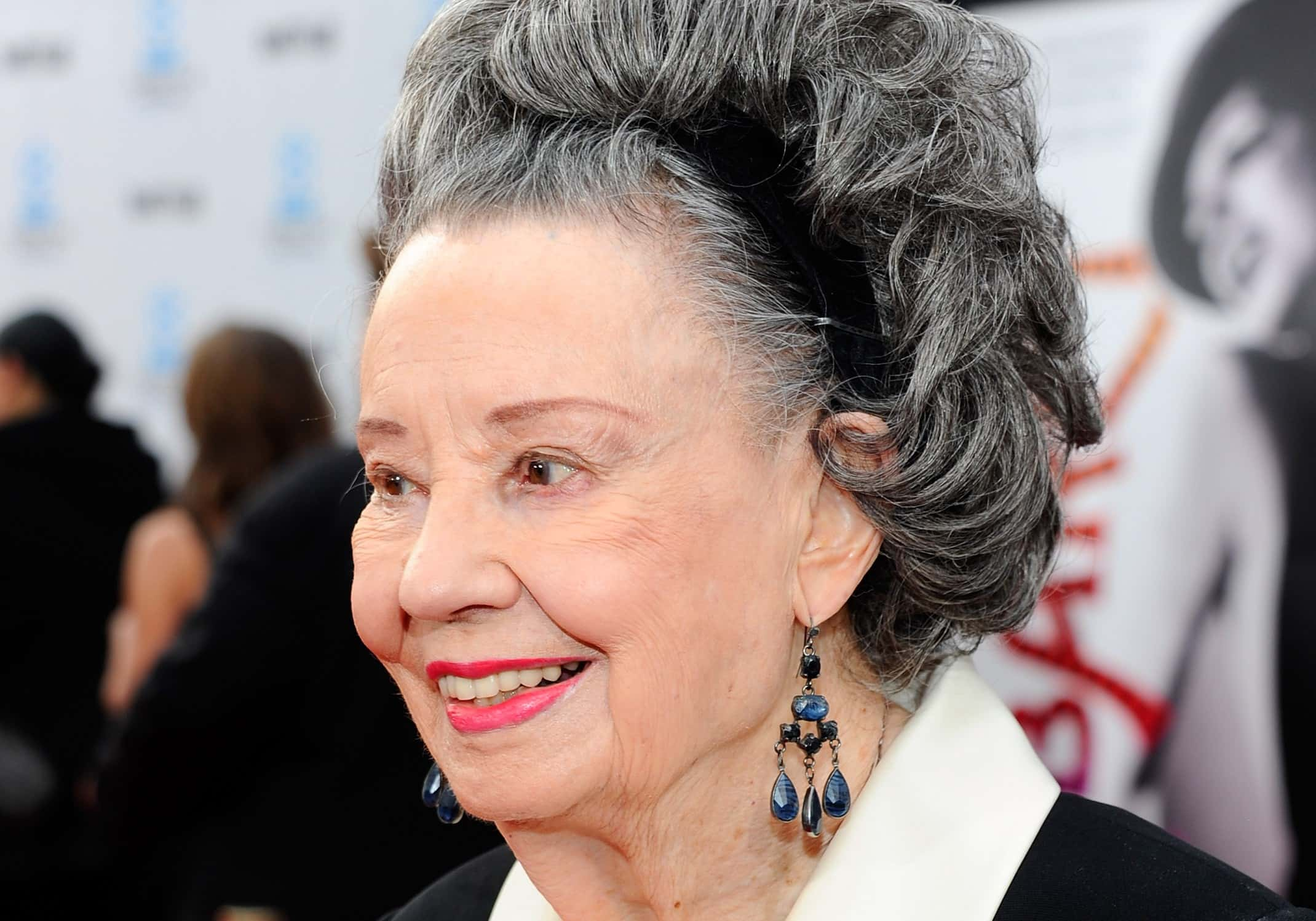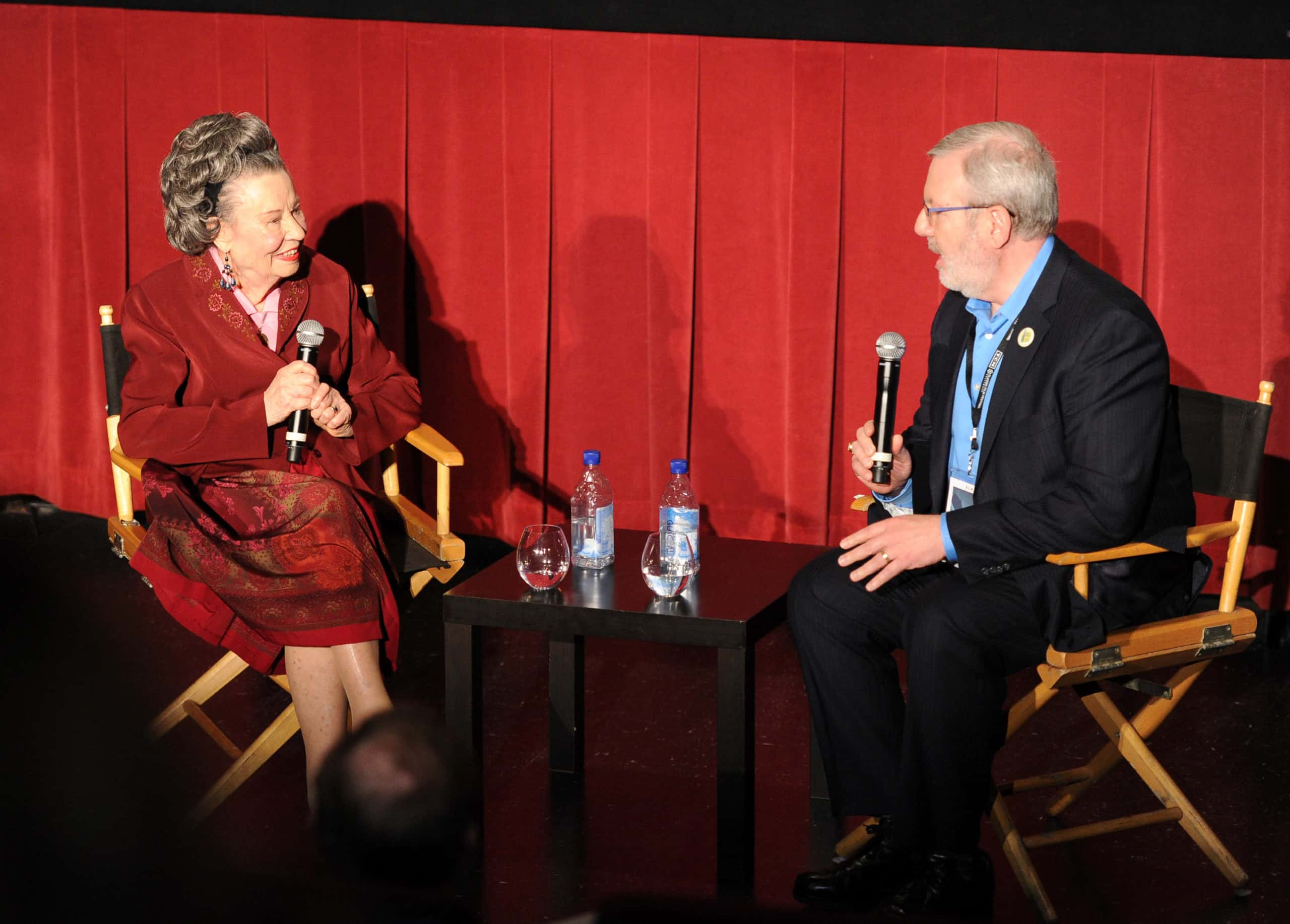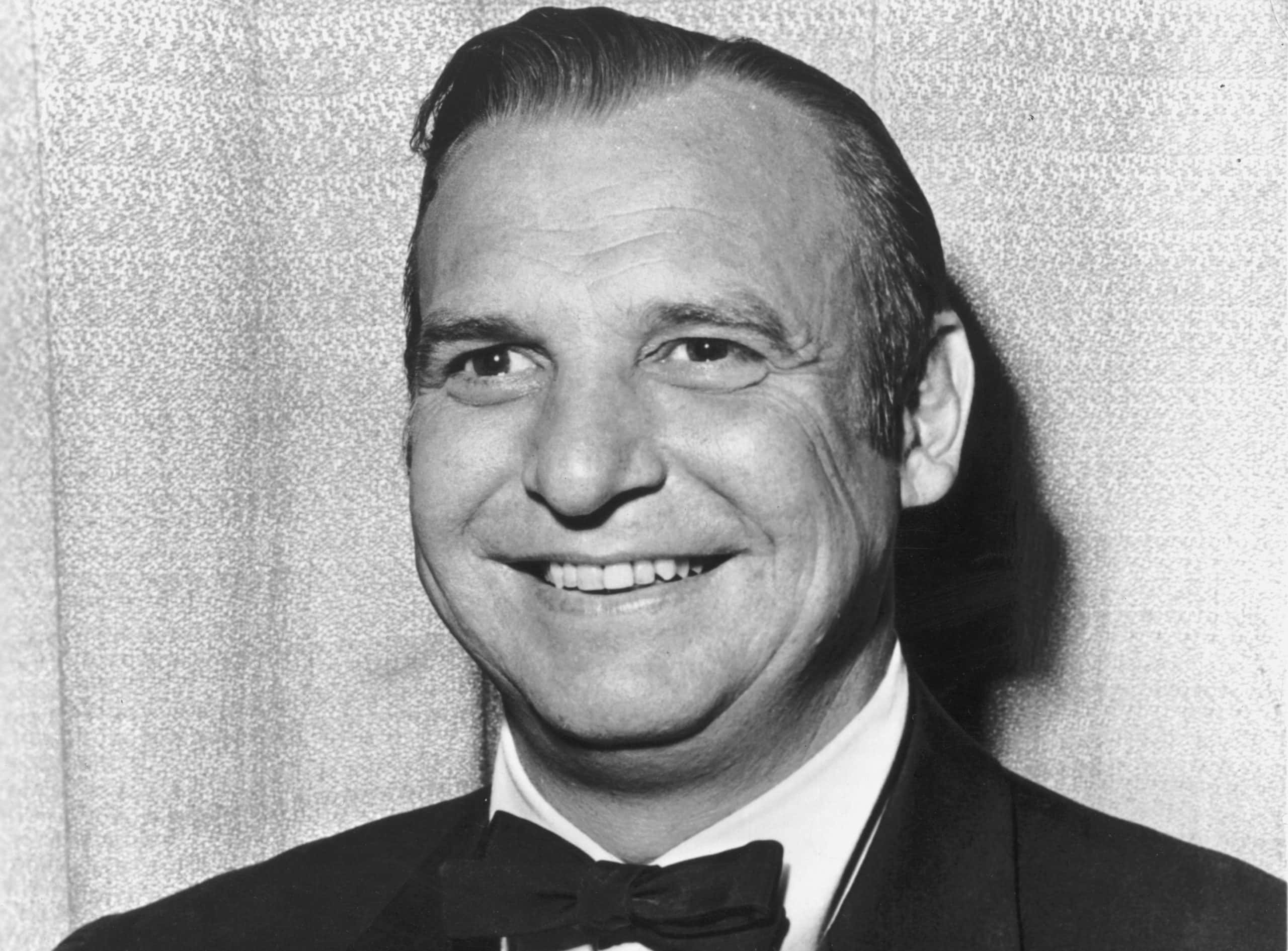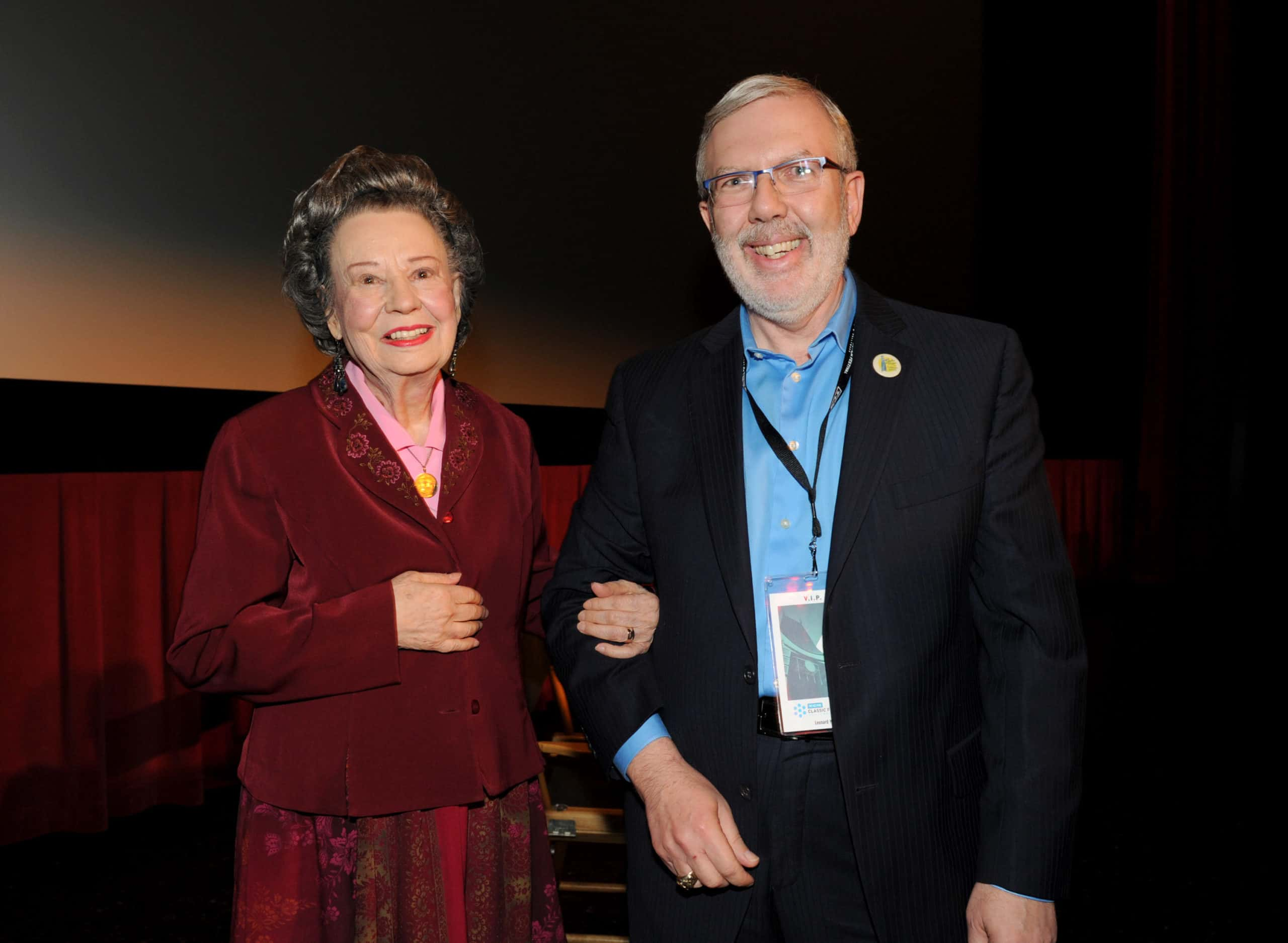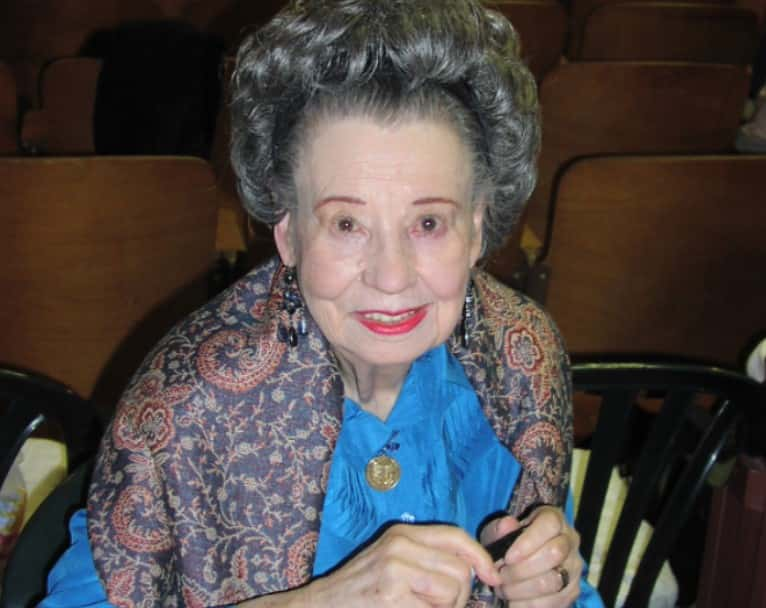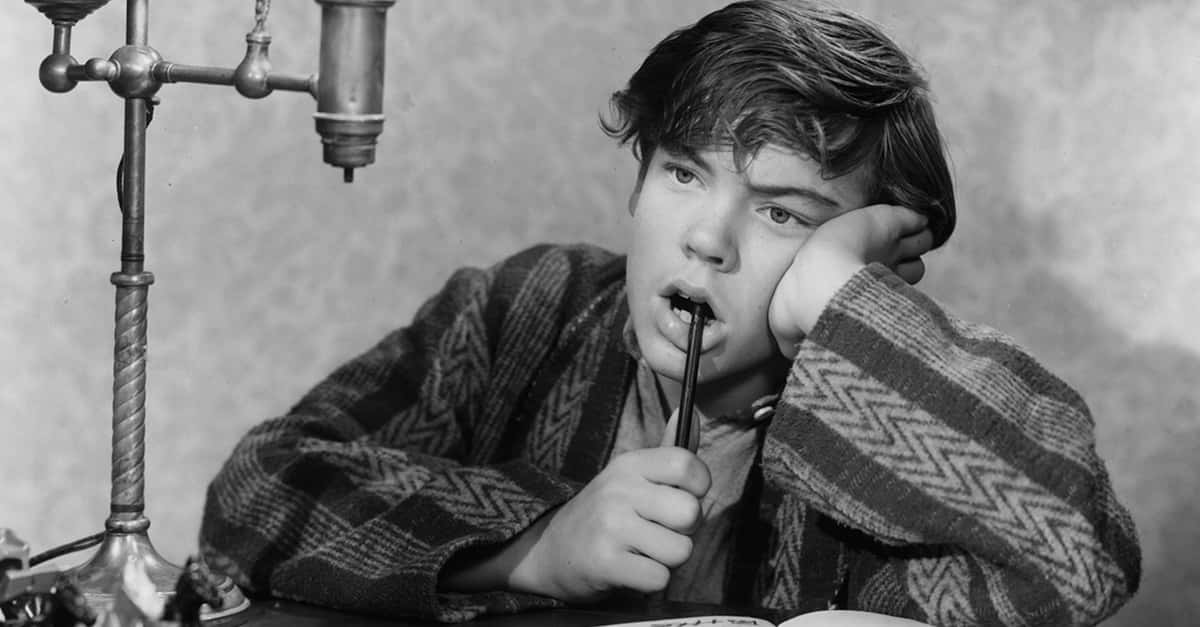Over the past century, child stars have endeared their way into people’s hearts. Baby Peggy was the first of many, and she forged a path for child actors when there wasn’t one. But being a groundbreaker also meant she had to navigate the harsh realities of being a child actor without a blueprint. The consequences? Absolutely heartbreaking.
1. Her Name Was Sacrilegious
On October 29, 1918, in San Diego, California, Baby Peggy came into the world as Peggy-Jean Montgomery. Later, some sources reported her name was Margaret, which Peggy denied. The cause of the confusion was likely due to the Roman Catholic nuns at the hospital suggesting her parents name her Margaret because Peggy was a pagan name.
Well, her parents didn’t listen to them. Thus, with a name fated for fame, little Peggy didn't have to wait long to break into the acting business.
2. Her Discovery Was Kismet
When it came to being discovered, Peggy had an undeniable stroke of luck. Her father was a former cowboy and park ranger who worked as a stuntman and stand-in for Tom Mix, Hollywood’s first Western star. One day, the toddler accompanied her mother and a family friend to Century Studios, where Jack was working. As fate would have it, Peggy made a stunning impression on some very important people.
3. She Got People’s Attention
Unbeknownst to her, Peggy’s life was about to change. While on the film set, she wowed the movie’s director with her good behavior and compliance with her father’s directions. He immediately cast the toddler in a few short films with Brownie the Wonder Dog, the studio’s canine star. In 1921, the studio released Playmates, which led to Peggy accepting a long-term contract with the studio.
Everything seemed to be looking up for the young star...at least, for the time being.
 Playmates (1921), Century Film
Playmates (1921), Century Film
4. Her Career Was On A Roll
Between 1921 and 1924, Peggy worked tirelessly. She acted in nearly 150 short comedy movies! Many lampooned full-length films, social concerns, and celebrities at the time. She also had parts in movie versions of books and fairy tales, comedies, and full-length movies. Eventually, she moved to another film studio, where she had the opportunity to work with a huge star.
5. Her Star Shone Brightly
In 1923, Peggy joined Universal Studios. For a change, she started acting in dramatic full-length movies. During this time, Universal made and promoted her movies as some of their best ones, labeling them as “Universal Jewels”. She also had a role starring opposite silent film star, Clara Bow, in Helen’s Babies. Now a bona fide star herself, Peggy wielded a power she didn't even know she had.
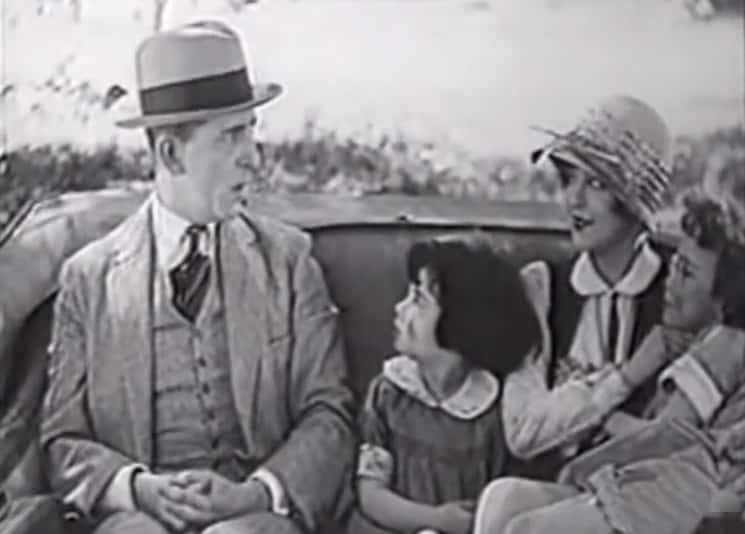 Helen’s Babies (1924), Principal Distributing
Helen’s Babies (1924), Principal Distributing
6. She Became A Promotion Machine
Peggy’s popularity made her schedule even more grueling. Outside of filming, she held in-person promotional tours throughout the US. She also appeared in short skits, performing them in famous venues. Nothing was off the table. During the 1924 Democratic convention, she became its Offical Mascot. She stood on stage next to Franklin D. Roosevelt and waved the American flag.
Her parents used her as their golden ticket—and cashed in on her fame in a disturbing way.
7. She Was Everywhere
Peggy’s parents seized the opportunity to enrich the family. Her images graced countless magazine covers. In addition, pictures of her appeared in ads for several businesses and charitable movements. Before reaching the age of five, she secured different product endorsements, such as Baby Peggy dolls, handbags, jewelry, and milk. Still, these lucrative deals were just the tip of the iceberg.
8. She Made Bank
Peggy scored herself a huge payday. Her film contract with Universal gave her an annual income of $1.5 million—$23.7 million in today’s terms. On top of that, she received $300 a day when she went on vaudeville tours. Peggy accumulated a fortune to the tune of a whopping $2 million. However, due to her age, little Peggy didn't exactly have control over her own funds.
9. She Lived It Up
Peggy’s success provided a good life, not just for her, but for her entire family. Before Peggy had even turned three, the Montgomerys began living it up in a mansion in Beverly Hills with maids at their service. There was no expense spared, and the family stayed in high-end hotels while traveling. In addition, Peggy's family owned a $30,000 Duesenberg car, and the tiny actress traveled to work in a chauffeured limousine.
But there was one thing she received that was beyond priceless.
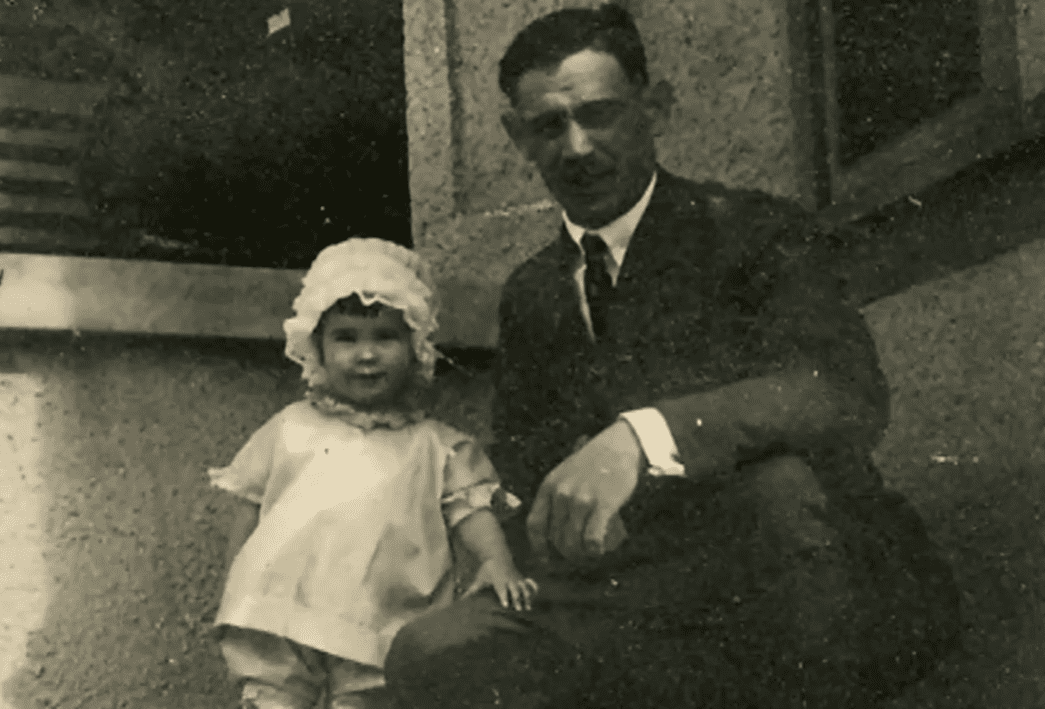 Baby Peggy, the Elephant in the Room, NOYE productions
Baby Peggy, the Elephant in the Room, NOYE productions

History's most fascinating stories and darkest secrets, delivered to your inbox daily.
10. She Became America’s Sweetheart
The media attention on Baby Peggy made her a social darling. Her famous hair bob and expressive acting made people fall in love with her. In the year she turned six, Peggy received more than 1.2 million fan letters. There were rumors that her family had to hire five women just to sort through the mail. However, the admiration she received inspired other self-seeking parents.
11. She Inspired Others
Baby Peggy’s fame led parents to harbor similar ambitions for their children. Later in her life, Peggy said she believed her success made the mothers of Shirley Temple and Judy Garland, who she later befriended, aspire for their daughters to reach the same heights of fame. Garland apparently owned a Baby Peggy doll as a child. But though the child star seemed to have it all, behind the scenes, life was far from rosy.
12. She Was An Unfortunate Pioneer
Life on sets wasn’t great for Peggy. Exploitation was rife. Peggy came up in the industry when child stars were a new phenomenon, which meant there were no laws to protect them. This was the dark side of Hollywood. As a toddler, Peggy was on set eight hours per day for six days per week. She didn’t receive breaks for rest or proper schooling.
Sadly, she wasn’t the only one subjected to mistreatment.
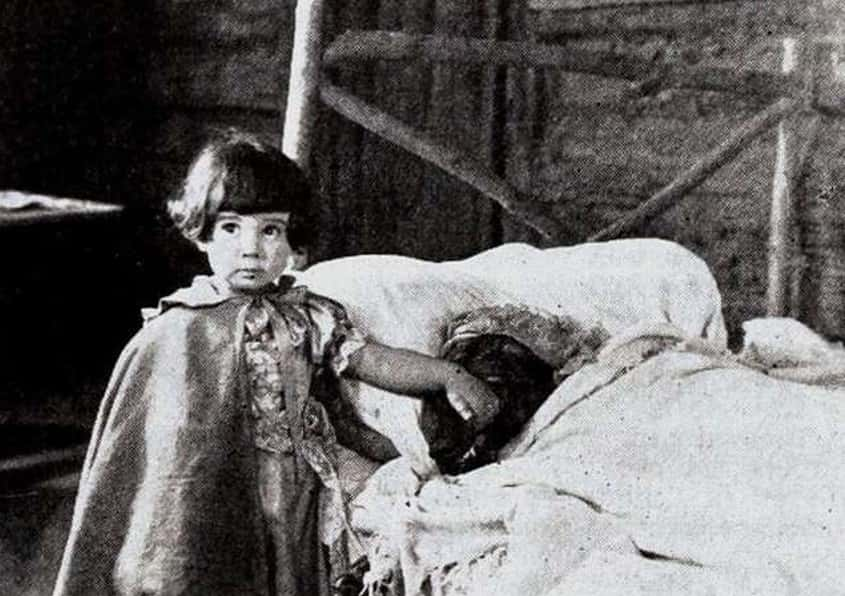 Picryl
Picryl
13. She Witnessed Terrible Things
Peggy witnessed some unspeakable things. During her time on sets, the precocious child performer also saw incidents of cruel animal treatment. When she was an adult, she recalled an occasion where she witnessed an elephant fatally squash a trainer during an act. As horrible as these situations were, they paled in comparison to the other things she endured.
14. She Suffered Inside
It wasn’t just the outside world Peggy contended with. Her public identity created an internal conflict with her true self. The aura of Baby Peggy overshadowed the real Peggy-Jean Montgomery. She struggled to balance the two, feeling her private self couldn’t exist under the crushing weight of her public persona. Unfortunately for the child superstar, the strain ran deep.
15. She Almost Reached A Boiling Point
Things got really bad for Baby Peggy. The frustration over her inability to reconcile both identities eventually created a personal crisis. This inner turmoil she faced almost led to a mental collapse, a pattern of events that later re-emerged in her life. While her mental health deteriorated during this time, her physical well-being was also at risk.
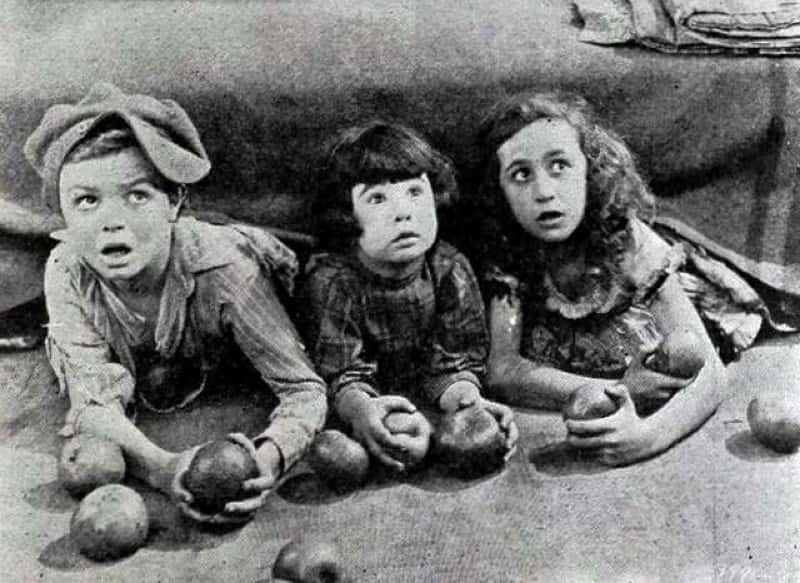 Picryl
Picryl
16. Her Life Was In Danger
On film sets, Peggy’s welfare was at stake. The child actor did most of her stunts, which were often brutally dangerous. One scene called for her to flee a burning room alone. The door that was her escape route caught on fire. Luckily, Peggy found a window and climbed out, only to discover that the windowsill was also on fire. Horrifyingly, the neglect didn't end there.
17. She Didn’t Have Control
Being a megastar didn’t mean Peggy had any true power. Although she was the family’s breadwinner, Peggy didn’t have any control. Instead, her parents managed her fortune—and the consequences were sickening. They recklessly spent their daughter's fortune on cars, homes, and clothes. Even worse? They only gave Peggy a nickel for each of her vaudeville shows.
While her parents spent her hard-earned money on luxuries, Peggy was aware of her important role.
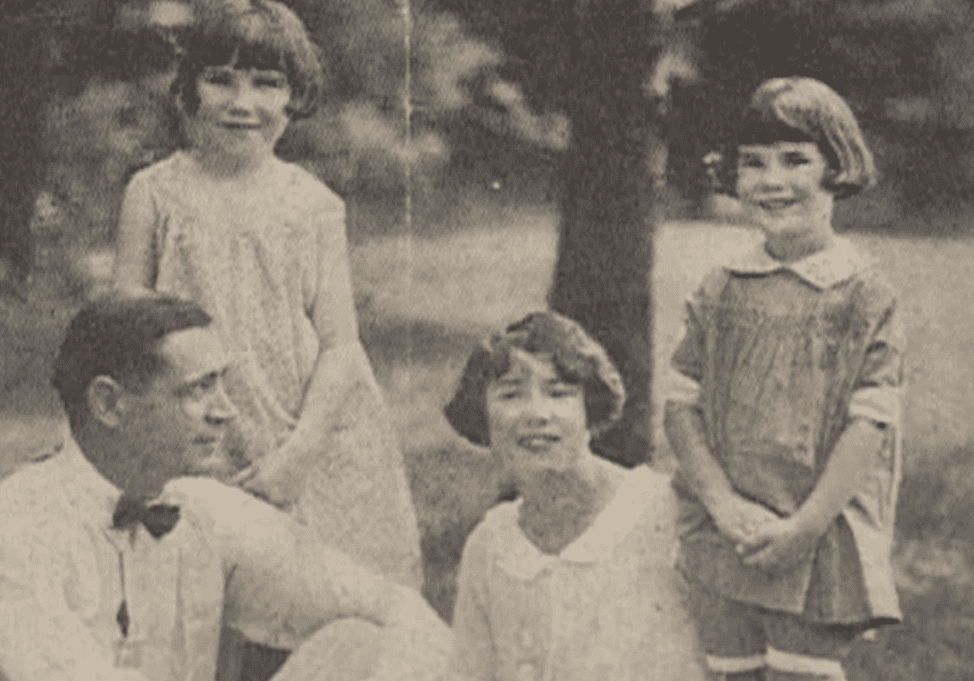 Baby Peggy, the Elephant in the Room, NOYE productions
Baby Peggy, the Elephant in the Room, NOYE productions
18. She Knew More Than She Let On
Baby Peggy may have been a baby, but she was no dummy. Her mother told the reporters that she enjoyed filming because she was unaware it was working and thought of it as playing. Despite what her mother believed, however, the truth was much darker. You see, Peggy knew the difference. She stated that she knew it was a job, adding that she didn’t know what play looked like because she never played as a child.
Oh, but it gets worse.
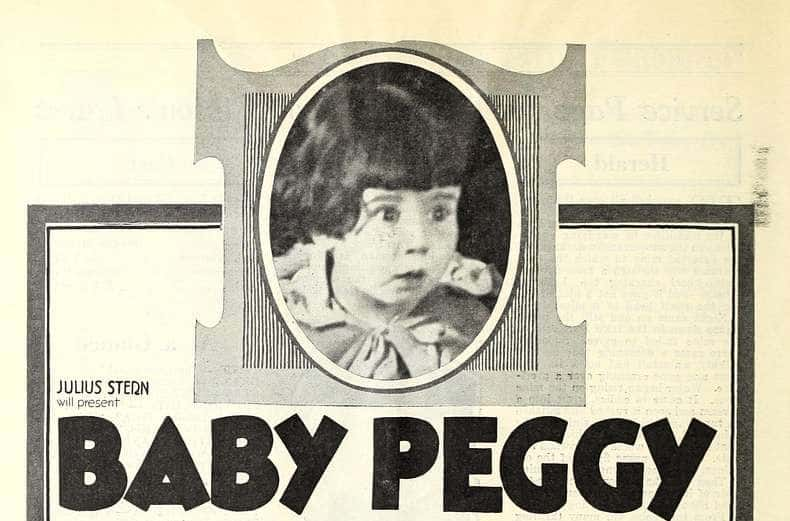 Picryl
Picryl
19. She Received A Different Kind Of Education
Usually, parents place importance on education, that is, unless they were Peggy's. Throughout her childhood, Peggy and her sister barely attended school. Unsurprisingly, the child star spent most of her time on sets. But if she hoped to one day further her education, a huge obstacle stood in her way: There was no money saved for her future.
Her parents had successfully squandered her fortune—but their sense of entitlement had even greater consequences.
20. Her Talent Came Into Question
Jack Montgomery sure was not Father of the Year. He made all the decisions regarding Peggy’s career, and she never went to the set without him. Still, it wasn’t enough for him. Jack even had the audacity to try and claim credit for Peggy’s success. He said Peggy owed her success to her obedience, downplaying her acting abilities. Well, he soon got a rude awakening.
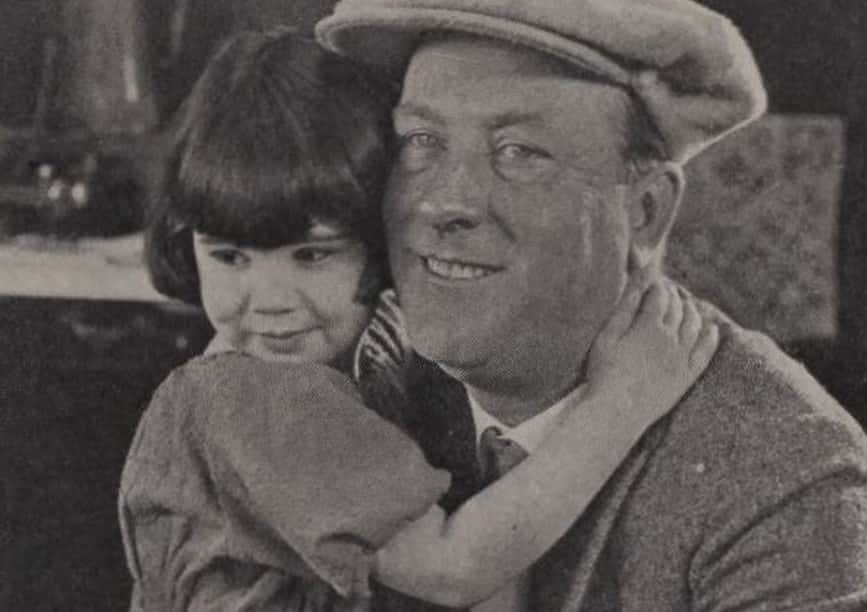 Picryl
Picryl
21. Her Father Made A Big Mistake
Out of the blue, Baby Peggy’s film career came to a crashing halt—and it was all thanks to her dad. In 1925, Jack got into an argument with producer Sol Lesser regarding her wages. In retaliation, Lesser revoked Peggy’s contract. But that wasn't the worst part. Following the incident, Hollywood boycotted her, and she only got a minor role in her last movie.
At the tender of seven, her film career was over, but she wasn’t done with show business.
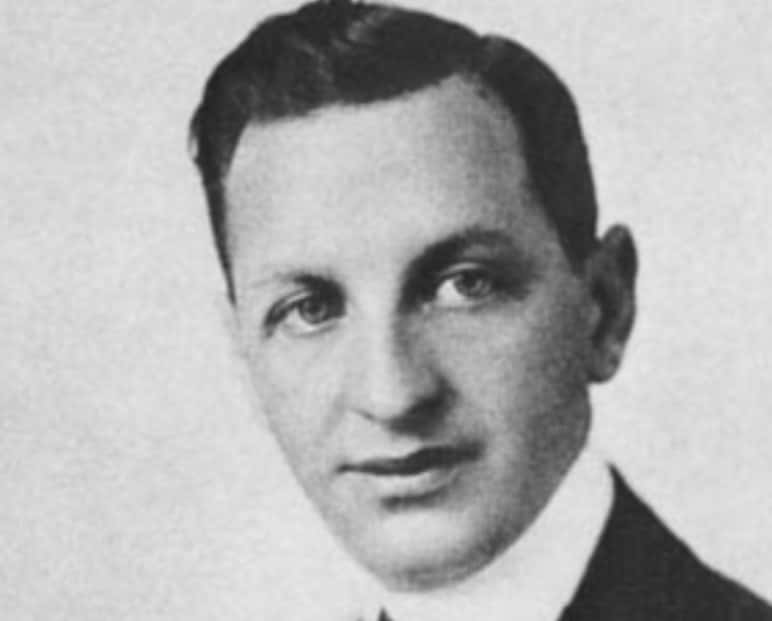 Wikipedia
Wikipedia
22. She Still Had A Career
While Hollywood abandoned her, Peggy’s vaudeville career still thrived. For four years, she went on an arduous tour. At first, people didn’t think much about the tour, but eventually, they grew to love and respect it. She even appeared as a special guest at the Palace Theatre in New York City, although she couldn’t perform there due to her age.
Sadly, Peggy soon learned that life on the road was harder than she could have ever expected.
23. Her Life Wasn’t Glamorous
Baby Peggy endured medical issues throughout her tour. During that time, she often suffered from tonsilitis and other illnesses. Despite her poor health, the child actor continued to perform through the pain. There were even times when her parents put a bucket on each side of the stage so that she could throw up before she went on and after she left.
However, when Peggy's tour life came to a close, that's when the real trouble began.
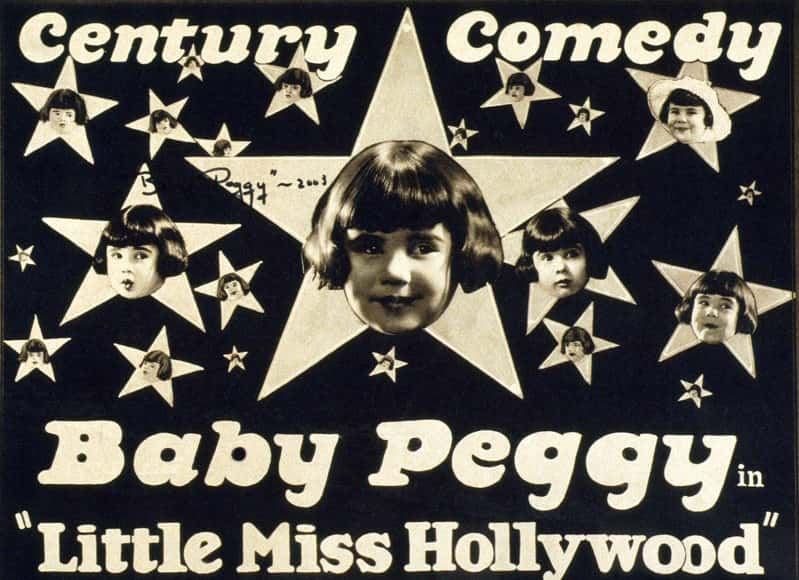 Getty Images
Getty Images
24. Her Life Changed
When Peggy’s film career went kaput, her family’s exorbitant spending did not follow suit. Around the time Universal dropped her, her grandfather stole most of her fortune. Although her earnings from her vaudeville tour helped to rebuild the family’s finances, their lavish lifestyle eventually caught up with them. The Montgomerys had to sell their Beverly Hills home, but it wasn’t enough to get them in the clear.
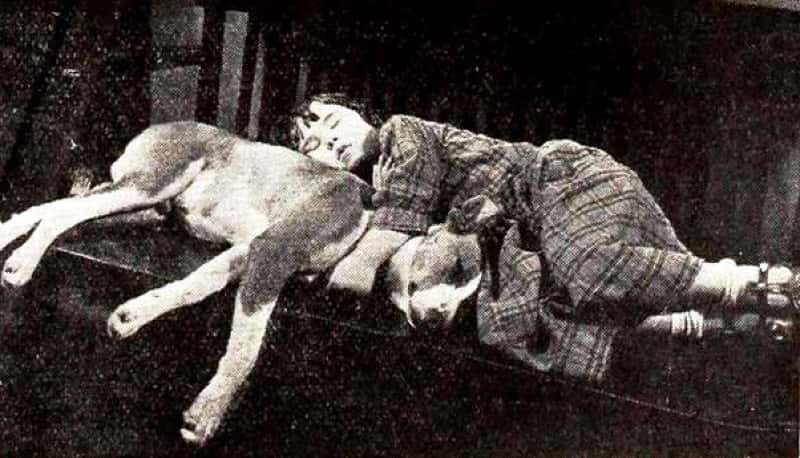 Picryl
Picryl
25. Her Problems Increased
Peggy and her family left flashy Hollywood for a ranch in rural Wyoming. Her father took $75,000 from the proceeds of the sale of the family home in LA and put a down payment on the property, which he hoped to turn into a luxury retreat. But there was failure on the horizon. Sadly, the stock market crash of 1929 put an end to those lofty plans.
Thus, the family struggled with the onset of the Great Depression, while Peggy faced an inevitable reckoning.
26. She Made A Hard Choice
Despite the poverty she experienced, Peggy found a silver lining in her new life. She enjoyed her life away from the stage and sets, but sadly, it didn’t last. The family went broke and sold all their valuable possessions to make ends meet. Left with no option, Peggy reluctantly returned to Hollywood with her family and $300 borrowed from a friend.
However, her reception was downright chilling.
27. She Received A Rude Awakening
Hollywood changed a lot after Peggy left. Talkies—movies with sound—were in. She also learned the hard way that she wasn’t a baby anymore. Now a teenager, she struggled to find work as an extra. When she did, she only got paid $3 a day and found herself surrounded by former silent film stars, also reduced to working as extras. Still, she attempted a comeback.
28. A Rumor Ruined Her
Despite her bumpy return to Hollywood, Peggy didn’t give up. To generate publicity, she took photos with Douglas Fairbanks Sr. In addition, she got herself a new manager. However, bogus rumors of a bad audition derailed her plans. The thing was: the "bad" screen test didn’t even happen. This baseless gossip ran rampant and did a number on her.
Peggy’s failed comeback resulted in the family subsisting on food coupons just to get by.
29. She Gained Some Normalcy
As a young child, Peggy got away with her sporadic attendance at school, but now the situation was different. The Los Angeles School Board insisted that she go to school, so Peggy and her sister attended the Lawlor Professional School, which had an accommodating schedule for child actors. There, her classmates included Mickey Rooney and Judy Garland.
But rubbing shoulders with other successful child actors didn't do her any good.
30. Her Home Was A Battlefield
The Montgomerys endured a lot together, but they could only do it for so long. Before long, all of them worked to survive. Their struggles led to marital strife between Peggy’s parents. Still, the growing deterioration of their marriage didn’t stop Jack and Marian from drowning their daughter in their ever-growing greed. As time passed, the stress impacted Peggy’s mental well-being in a sinister way.
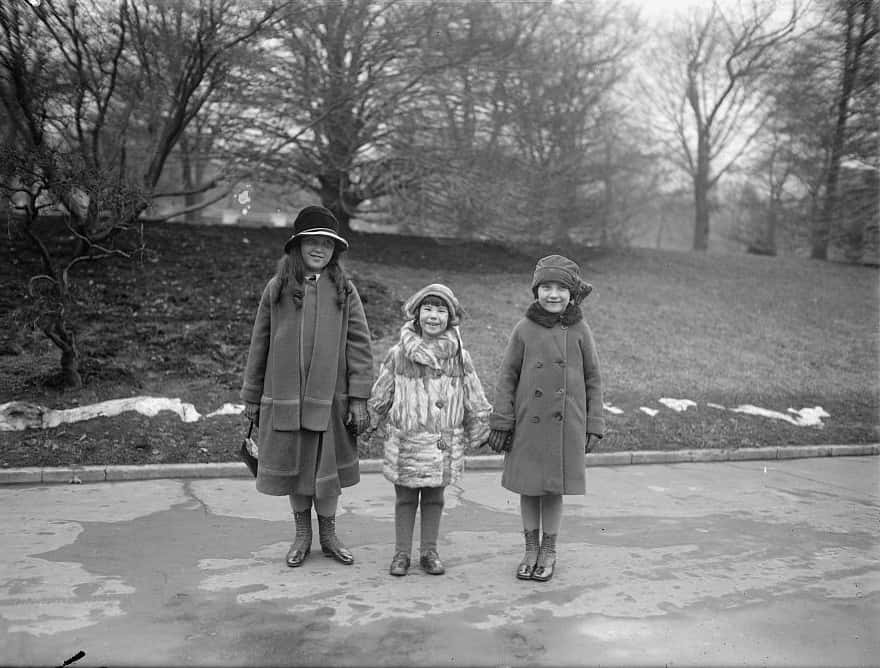 Picryl
Picryl
31. She Broke Away
There was only so much Peggy could take. Her return to Hollywood floundered, and a career revival seemed unlikely. Her home life just wasn’t the haven she craved. As a result, she had several nervous breakdowns. Frustrated with her professional and personal troubles, 17-year-old Peggy ran away with her sister—and wildly, a chance at retribution came a few years later.
32. She Had A Choice
During Peggy’s prime acting years, there were no laws that protected child actors. In 1938, Jackie Coogan, Peggy’s contemporary who shared similar experiences, sued his parents for misappropriating his fortune. Concerned she would follow suit, her parents asked Peggy if she had the same intention. Peggy chose not to as she saw there was nothing for her to gain.
Still, her case led to some major changes.
33. Her Story Saved Others
Although Peggy didn’t take legal action against her parents, her case helped change Californian law. In 1939, the State of California passed the California Child Actor’s Bill aka the Coogan Act, named after Coogan. The law protects child actors from maltreatment and ensures a share of their earnings goes into a trust. So, while Peggy didn’t get her money back, her harrowing story helped future child actors keep theirs.
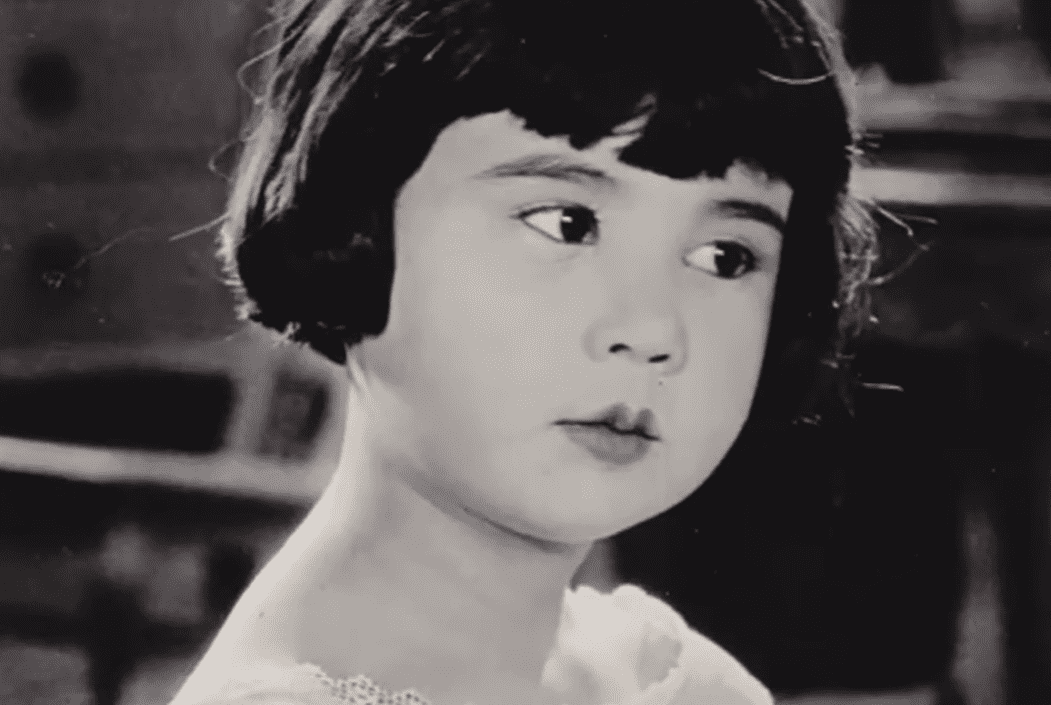 Baby Peggy, the Elephant in the Room, NOYE productions
Baby Peggy, the Elephant in the Room, NOYE productions
34. She Found Happiness
Following her break from her parents, Peggy had a tough entry into adulthood. She continued to struggle to re-establish herself in Hollywood. Despite the challenges she faced, Peggy had some happy moments. On the set of Ah, Wilderness!, she met Gordon Ayres, a bartender who also desired to make it in Hollywood. Three years later, she married Ayres—and transformed her life all over again.
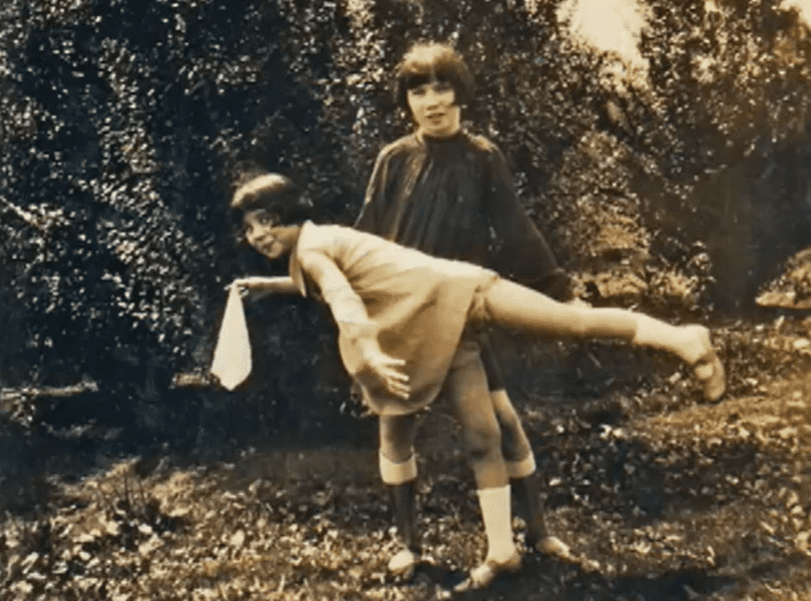 Baby Peggy, the Elephant in the Room, NOYE productions
Baby Peggy, the Elephant in the Room, NOYE productions
35. Bye Bye Baby Peggy
Peggy had difficulties shaking off the shadows of her past. Although she was now an adult, people just couldn’t stop seeing her as Baby Peggy. Peggy decided she had to reinvent herself in a drastic way—a name change. Drawing inspiration from actress Diana Wynyard and her husband’s surname, she became Diana Ayres, the child star formerly known as Baby Peggy.
But if she assumed that the identity change would help her career, she was so, so mistaken.
36. She Experienced Hard Times
Despite the name change, Diana still only landed work as an extra. In 1940, a newspaper column alleged she and her husband were living in humble conditions in New York City. Gordon worked as a bartender to make ends meet, while Diana searched for acting work. Apparently, the couple survived on donuts. To make matters worse, her working conditions hadn't improved very much.
37. She Got Unwanted Attention
As an adult, Diana learned there was another kind of danger on sets. In an interview later in her life, she told of how men would linger around the sets and approach beautiful girls by massaging their necks. Sometimes, these men would make suggestive comments. Unfortunately, the young actress wasn’t immune to their advances, but she eventually found a way to keep the vultures at bay.
38. She Found A Solution
Diana found a way to repel the unwanted male attention. As it turned out, intellectual women scared the men on the sets. When Diana went to work, she would bring a highly academic book, which was somehow kryptonite to them. Once the men saw her with it, they stayed away from her. Of course, books would later become more than just a security device for Diana.
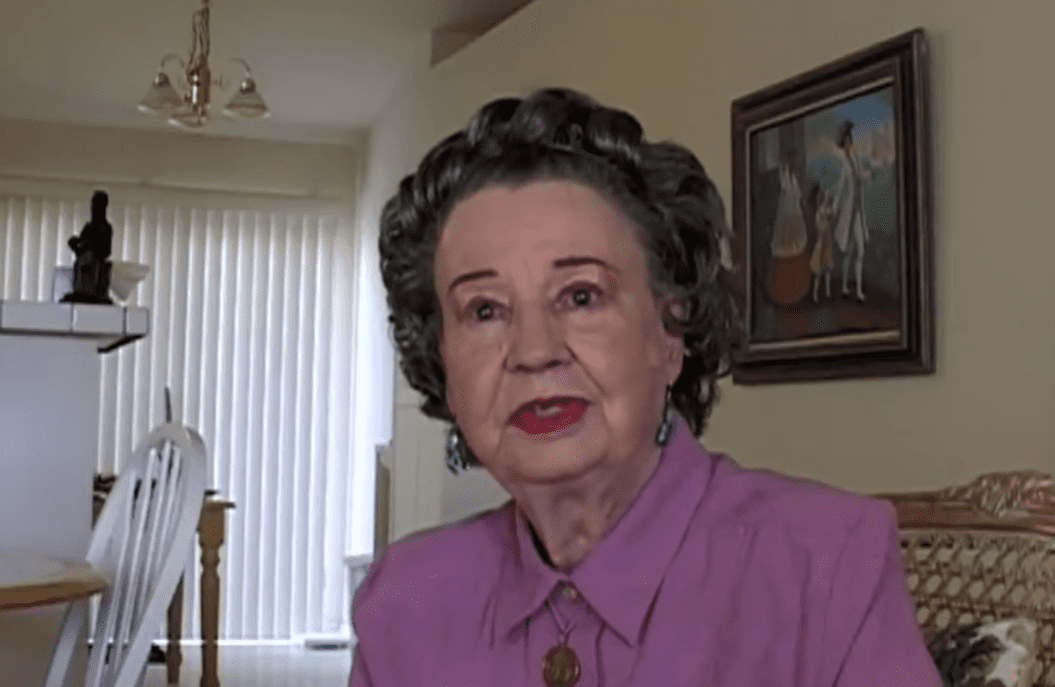 Baby Peggy, the Elephant in the Room, NOYE productions
Baby Peggy, the Elephant in the Room, NOYE productions
39. More Changes Came Her Way
Diana’s personal life continued to change, but not in a happy way. After a decade of marriage, she and Ayres divorced. Following the split, she converted to Roman Catholicism and changed her name again. This time, she took the confirmation name of Serra and became known as Diana Serra. It was the beginning of yet another chapter—but the biggest change was yet to come.
40. She Walked Away
After years of struggling to rebuild her acting career, Diana gave up on it. From a young age, she disliked acting. However, as an adult, she grew to hate it and decided to move on to an entirely new life. After the end of her acting days, the former actress worked as a switchboard operator, a bookstore assistant, and a gift shop manager. Eventually, her love of books led to her most fulfilling job yet.
41. She Had A Second Career
Peggy’s interest in the written word led her in a different direction. In 1954, she founded a greeting card company. Later, she managed a bookstore at the University of California in San Diego during the 60s. Meanwhile, she moonlighted as a freelance magazine writer and journalist on historical and religious topics. As her professional life gained stability, so did her love life.
42. Her Personal Life Saw More Changes
With one failed marriage behind her, Diana finally found the love of her life. In 1954, she married Robert Cary, an artist, and took his surname, becoming Diana Serra Cary. Their marriage produced a son and lasted until Robert’s passing in 2001. The couple eventually relocated to Cuernavaca, Mexico before returning to the US in 1970, where Diana’s writing career made an inevitable transition.
43. She Made Peace With Her Past
Upon her return to California, Diana became a film historian and began to write books. Drawing from her father’s experiences as a cowboy-turned-stuntman, she released her first novel, The Hollywood Posse, in 1975. Three years later, she wrote about the horror stories and fates of child actors in Hollywood’s Children: An Inside Account of the Child Star Era.
Soon, it was time for Diana to tell her own chilling life story.
44. She Told Her Truth
After decades of struggle, Diana purged the demons of her past. In 1996, she released her memoir, Whatever Happened to Baby Peggy? The Autobiography of Hollywood’s Pioneer Child Star. Writing the book had been a cathartic experience as she reflected on her career and her parents’ mishandling of her fortune. What's more? Diana made sure that this growing awareness of child stars' struggles didn’t end with her story.
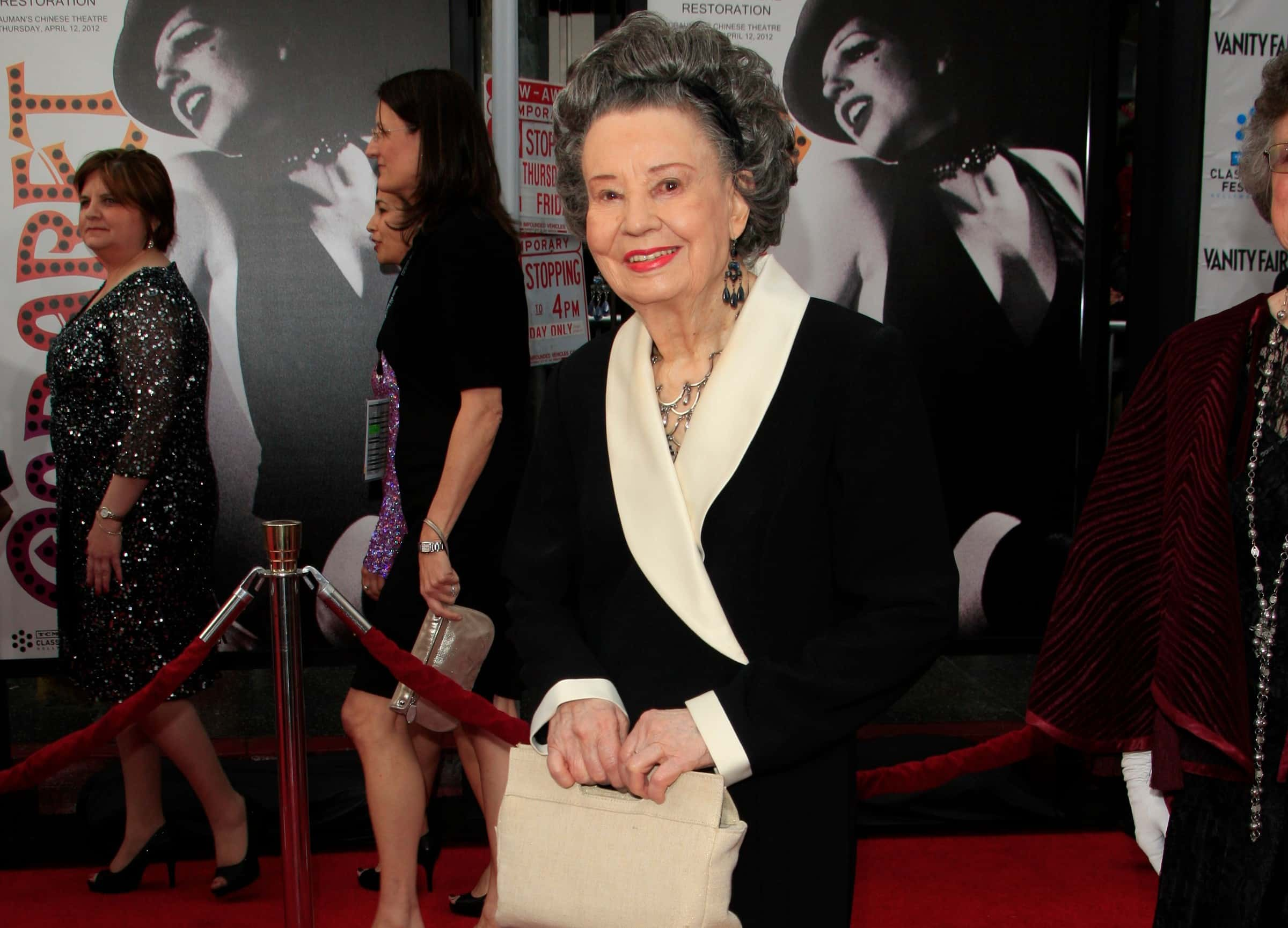 Shutterstock
Shutterstock
45. She Didn’t Forget About Others
Diana didn’t only think about her plight as a child actor. In 2003, she put the spotlight on her fellow child star, Jackie Coogan, titled Jackie Coogan: The World’s Boy King: A Biography of Hollywood’s Legendary Child Star. In her autobiography, Diana also recalled the fates of other child stars, including her friend, Judy Garland. She also took her fight beyond the pages of books.
46. Her Activism Continued
Diana continued to promote the rights of child performers. She became a member of the non-profit advocacy organization, A Minor Consideration. As an activist, Diana spoke at movie screenings, hoping to educate the public and raise awareness about the issues and dangers child actors face in the industry. Despite her best efforts, she encountered difficulties in this challenging role.
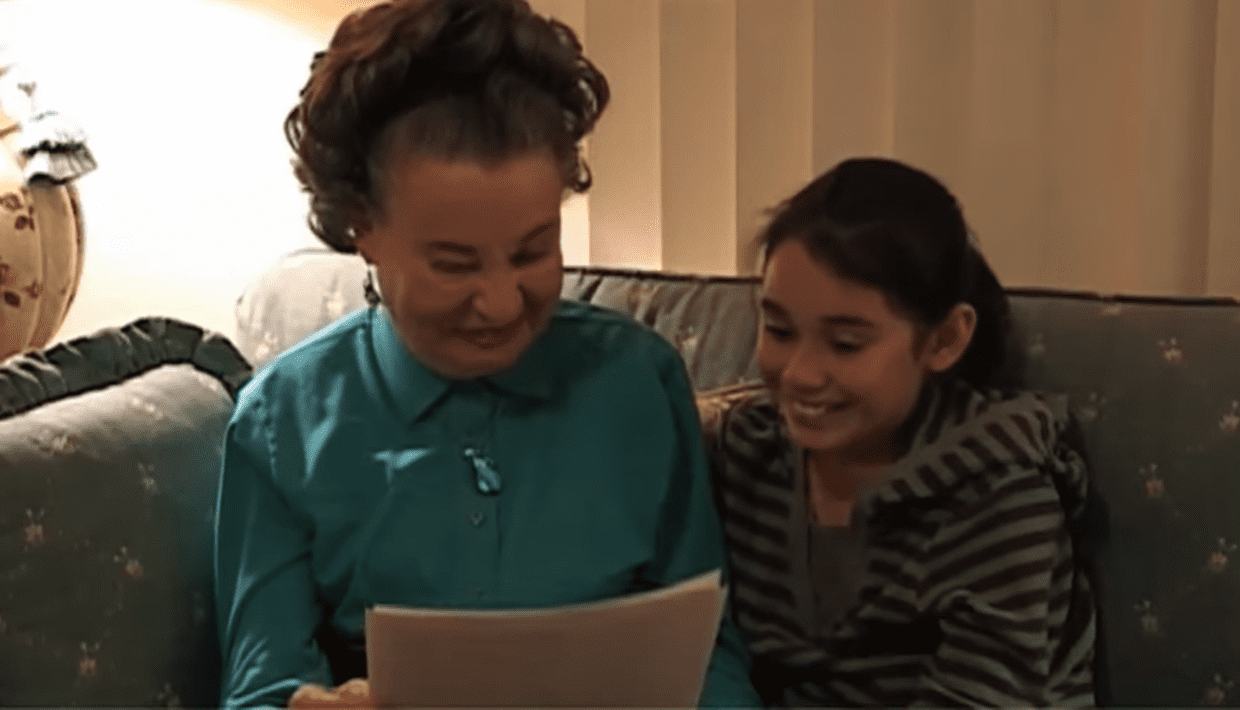 Baby Peggy, the Elephant in the Room, NOYE productions
Baby Peggy, the Elephant in the Room, NOYE productions
47. She Faced Obstacles
Diana found dealing with stage parents a trying ordeal. Her familiarity with being a child of such parents didn’t make things any easier for her. At her speaking engagements, she found it difficult to get them to see the light. She even used the example of how a toddler cannot find a studio door by themselves to prove her point. In her later years, Diana continued to speak about her past.
 Baby Peggy, the Elephant in the Room, NOYE productions
Baby Peggy, the Elephant in the Room, NOYE productions
48. She Embraced Her Childhood
In deep contrast to her earlier years, Diana didn’t shy away from talking about her heydays. She participated in documentaries, including Turner Classic Movies’ Baby Peggy: The Elephant in the Room and HBO’s Showbiz Kids, where she gave further insight into that time of her life. Her willingness to honestly speak about her past and the downside of child stardom showed a level of comfort and acceptance.
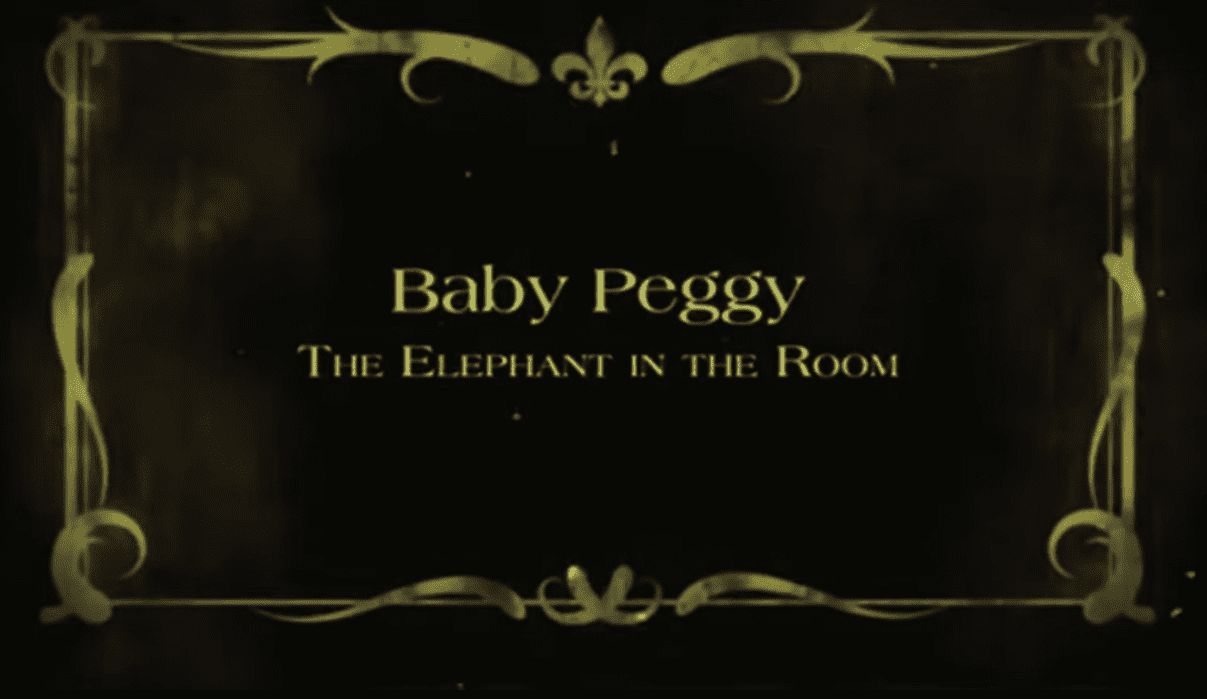 Baby Peggy, the Elephant in the Room, NOYE productions
Baby Peggy, the Elephant in the Room, NOYE productions
49. She Wore A Different Hat
Age didn’t slow Cary down. In 2017, she celebrated her 99th birthday with the release of her first novel, The Drowning of the Moon, a historical story about an aristocratic woman in New Spain. It was also the first time she self-published her written work. The event marked a major triumph for the former actress in the final stage of her life.
50. She Reached More Milestones
At the end of her life, Diana Serra Cary, the woman formerly known as Baby Peggy, one of America’s first child stars, received even more noteworthy distinctions. She was most likely the last living star of the silent film era. On February 24, 2020, she passed in her home in Gustine, California at the age of 101. 10 days prior, she'd spoken to Silence is Platinum, a silent film blog, about the realities of life as a child star, continuing to campaign for a cause close to her heart.

